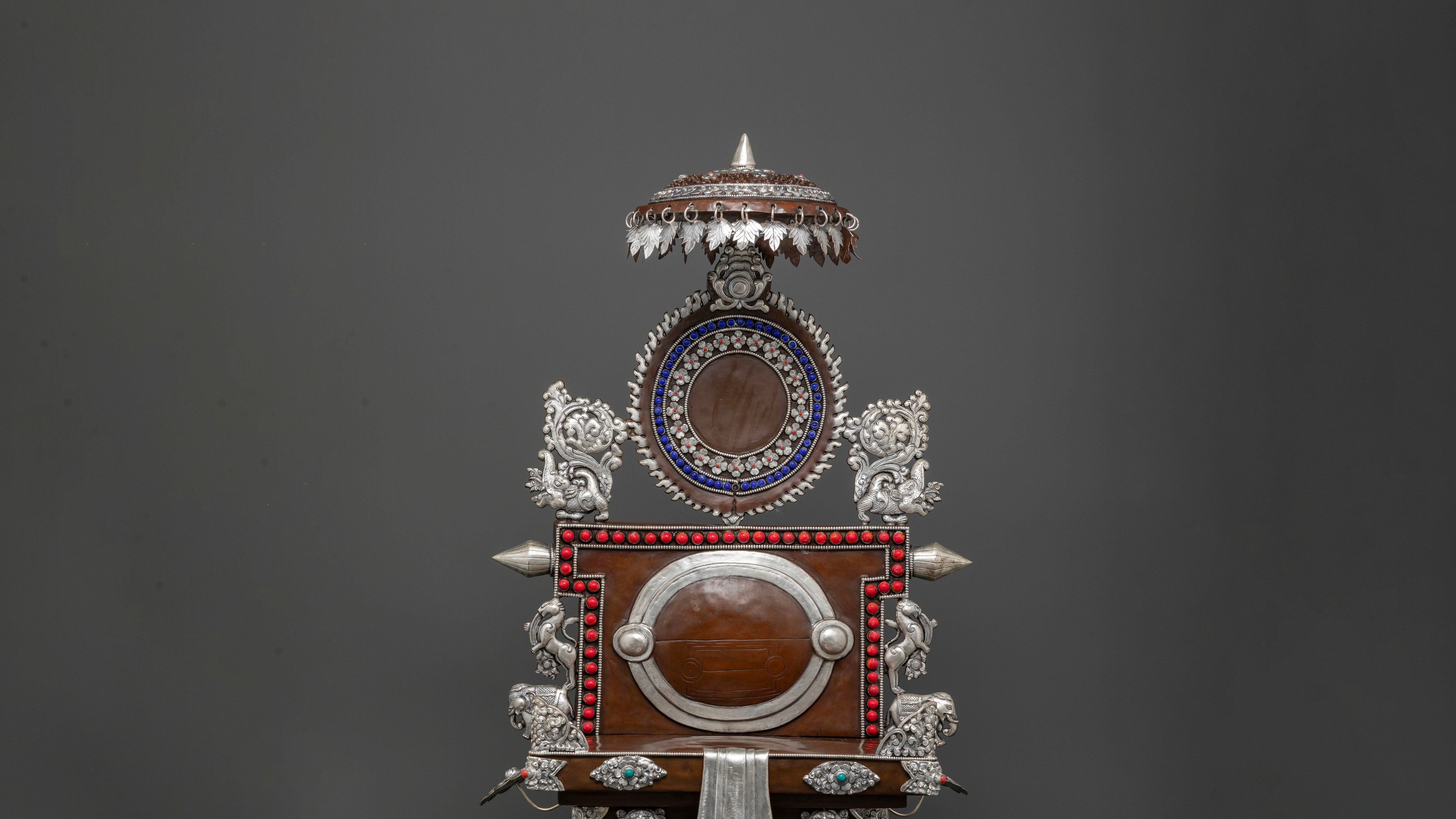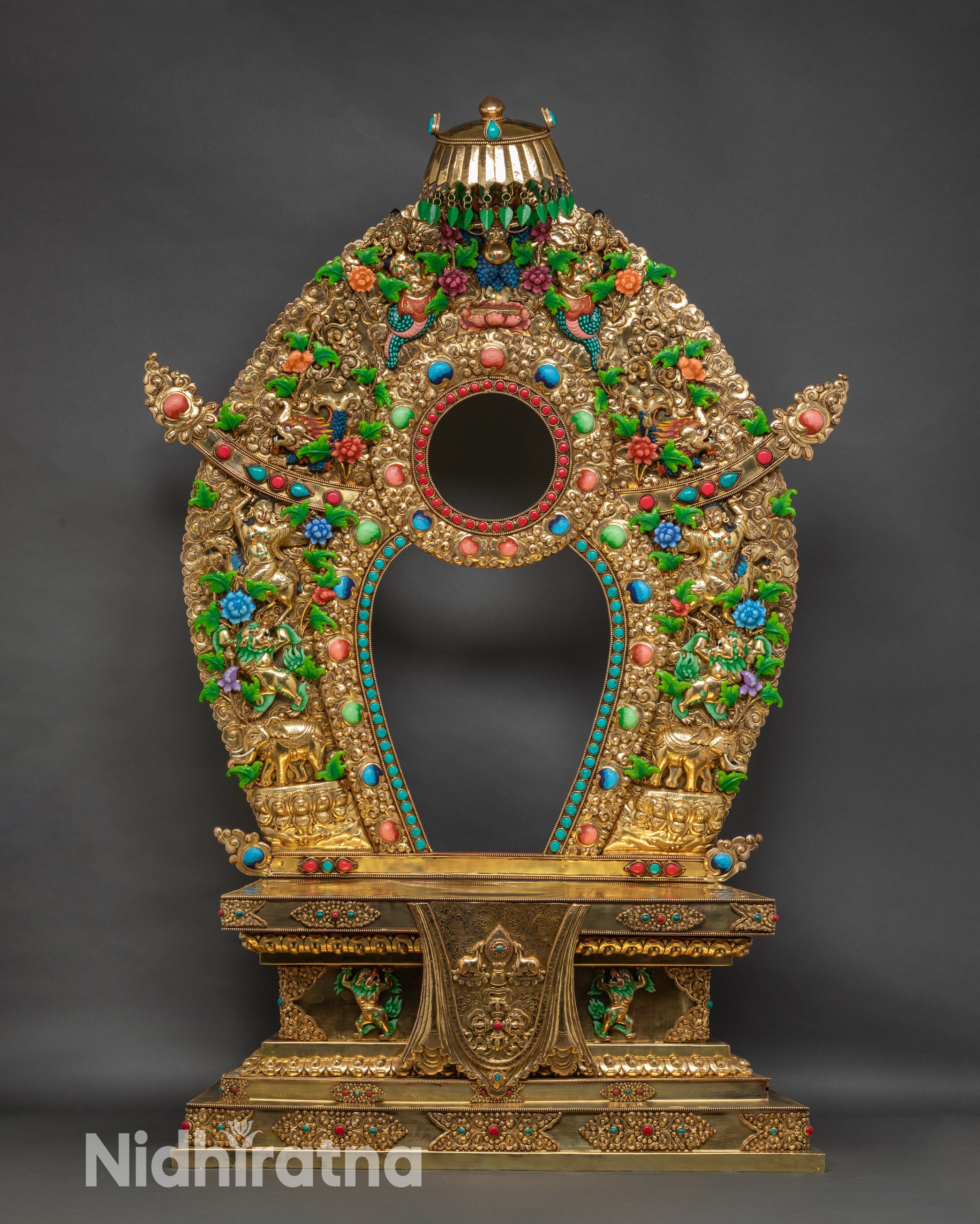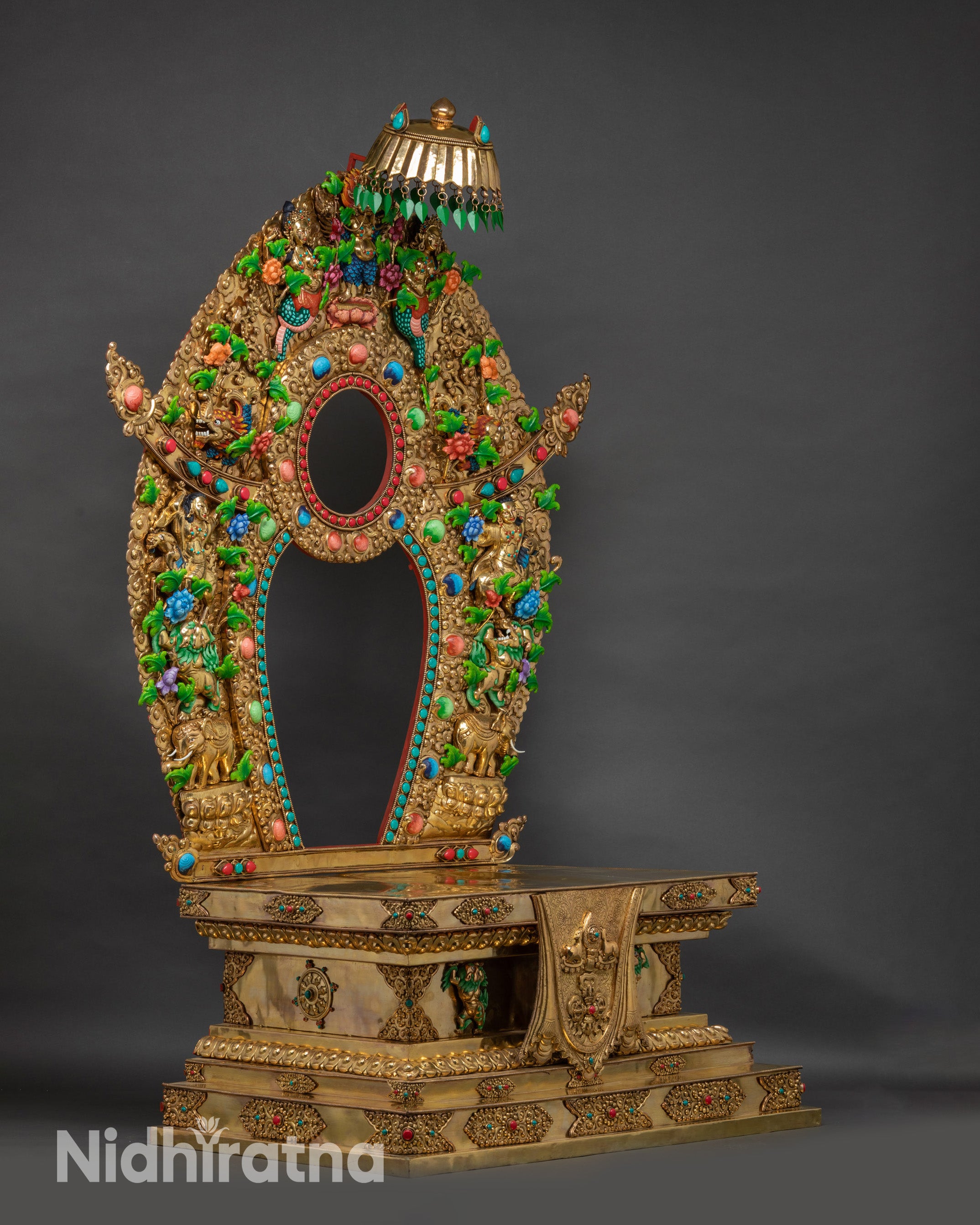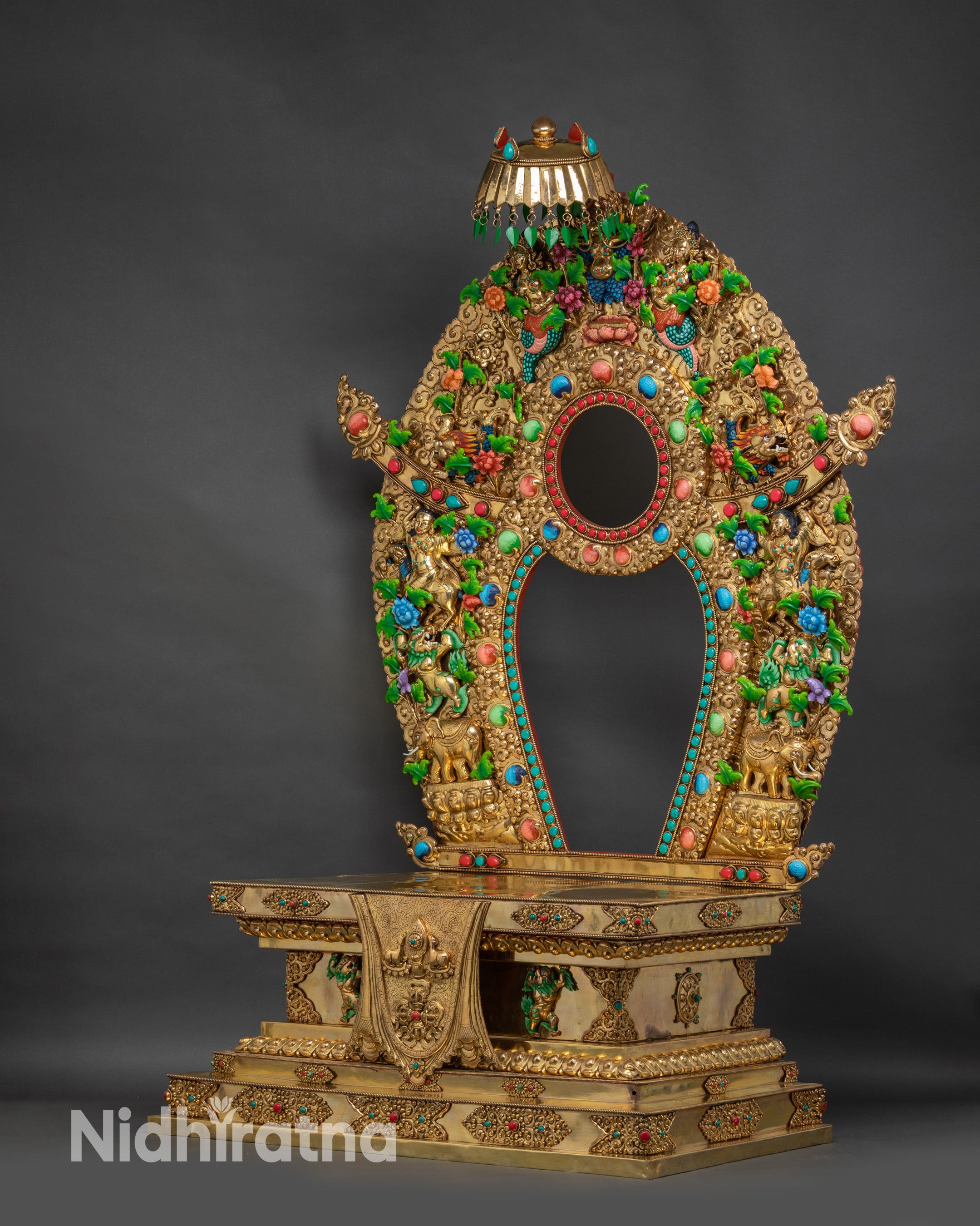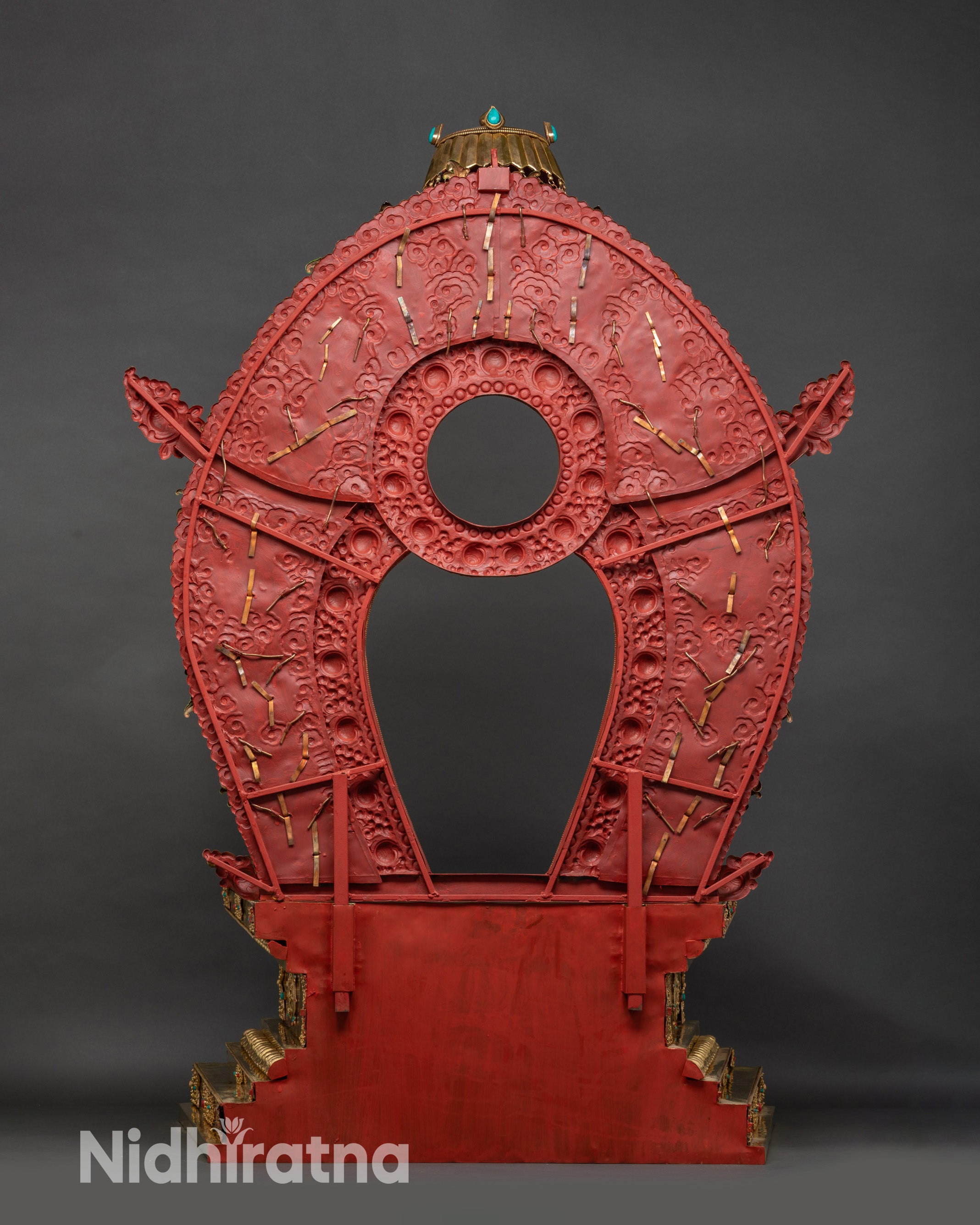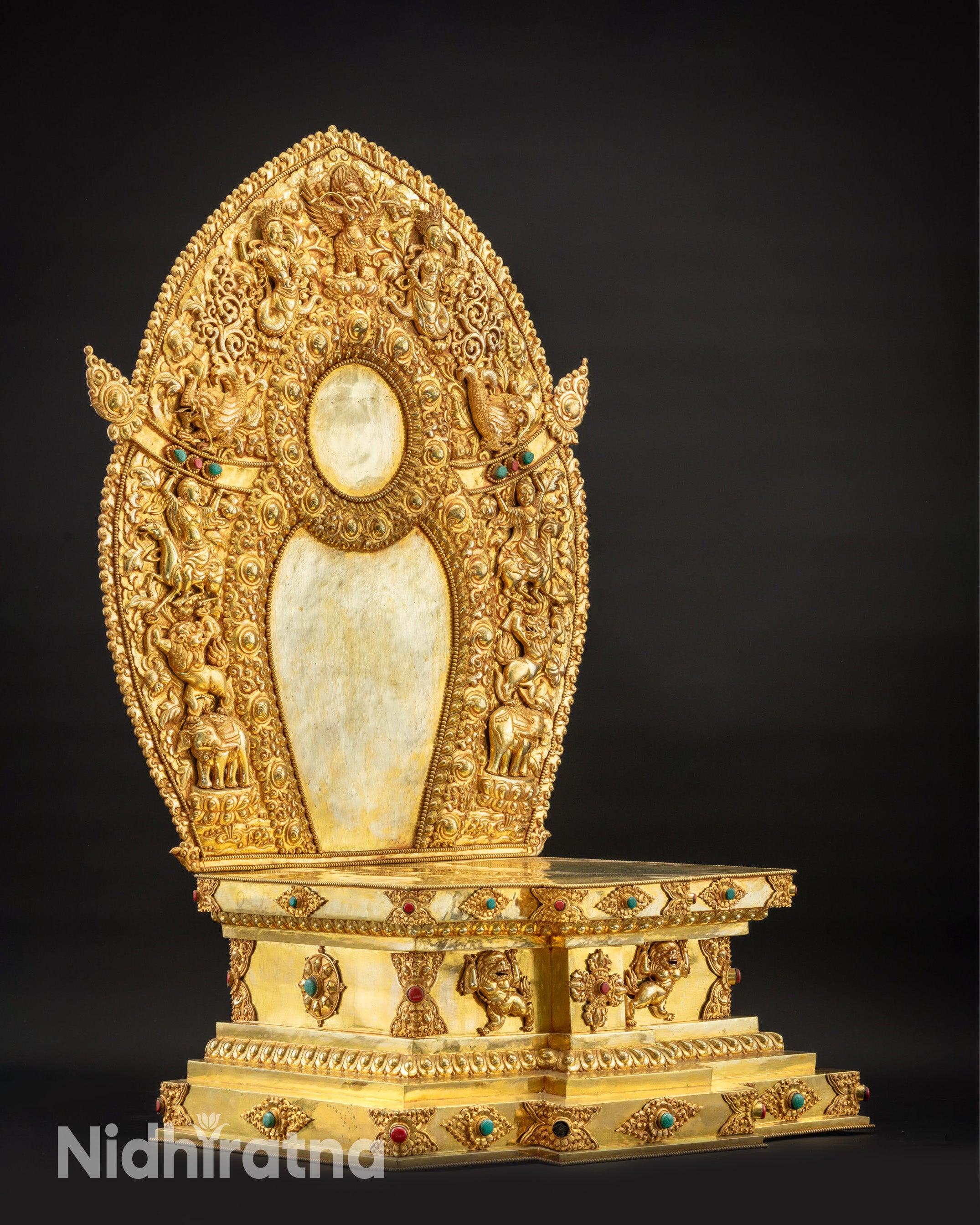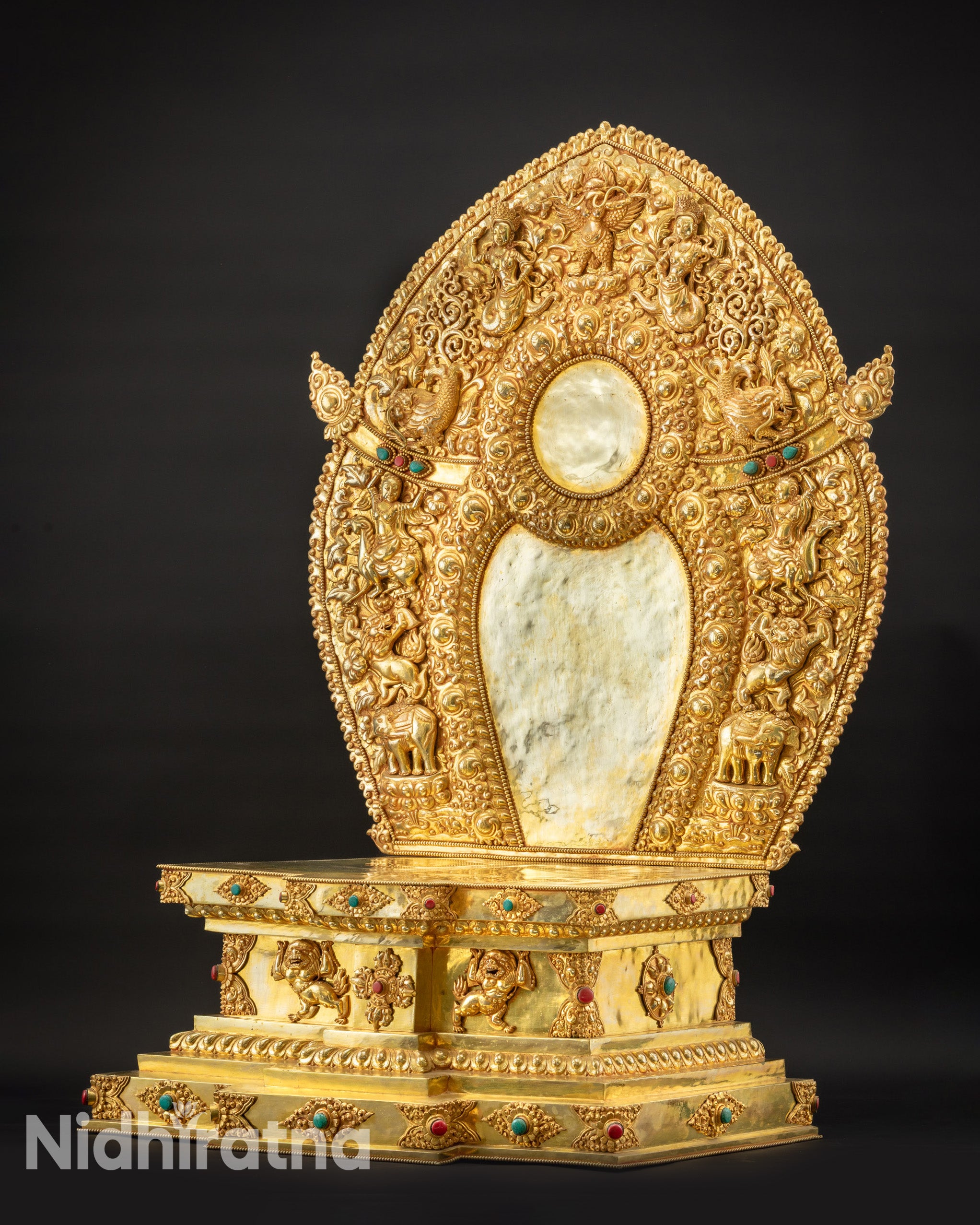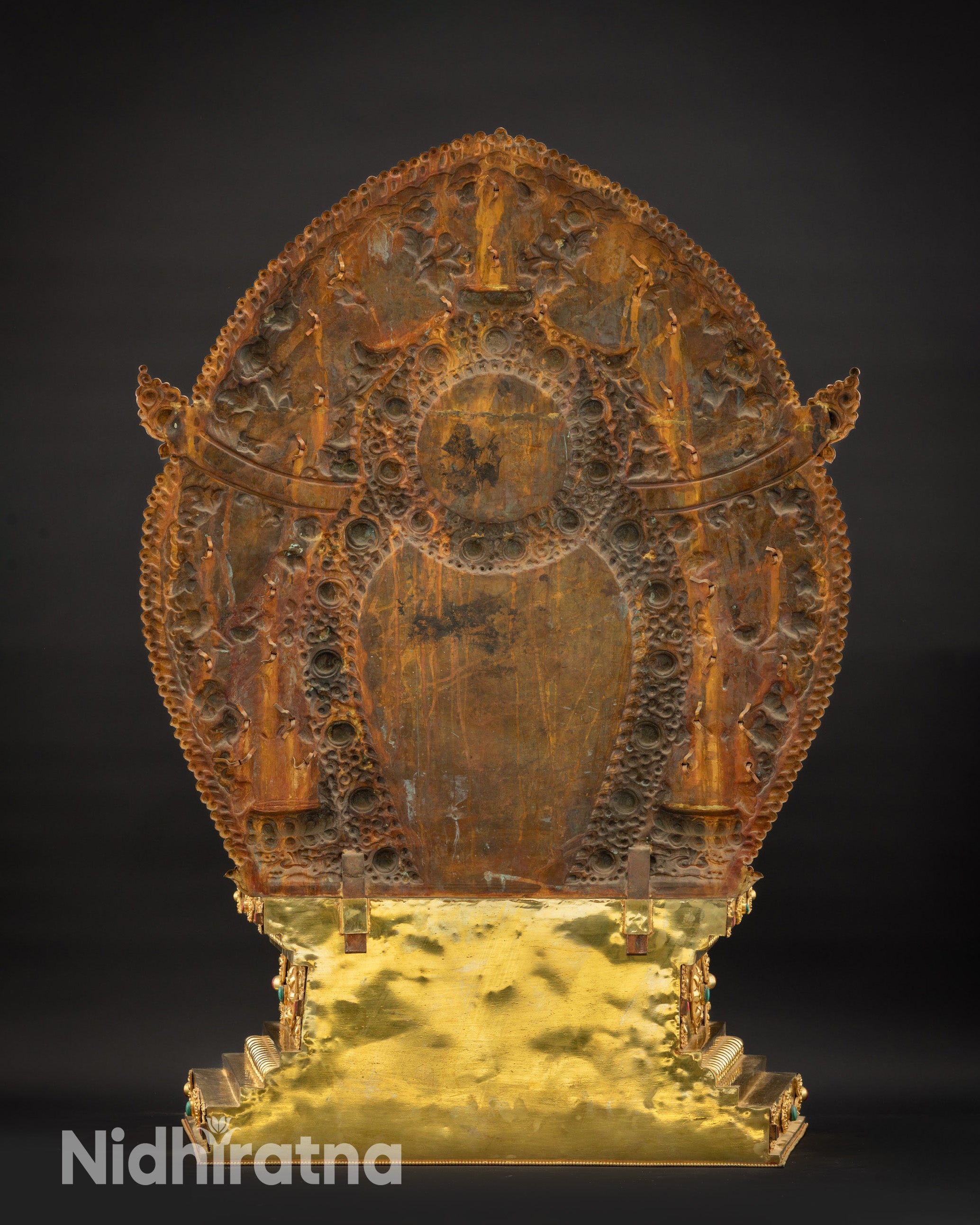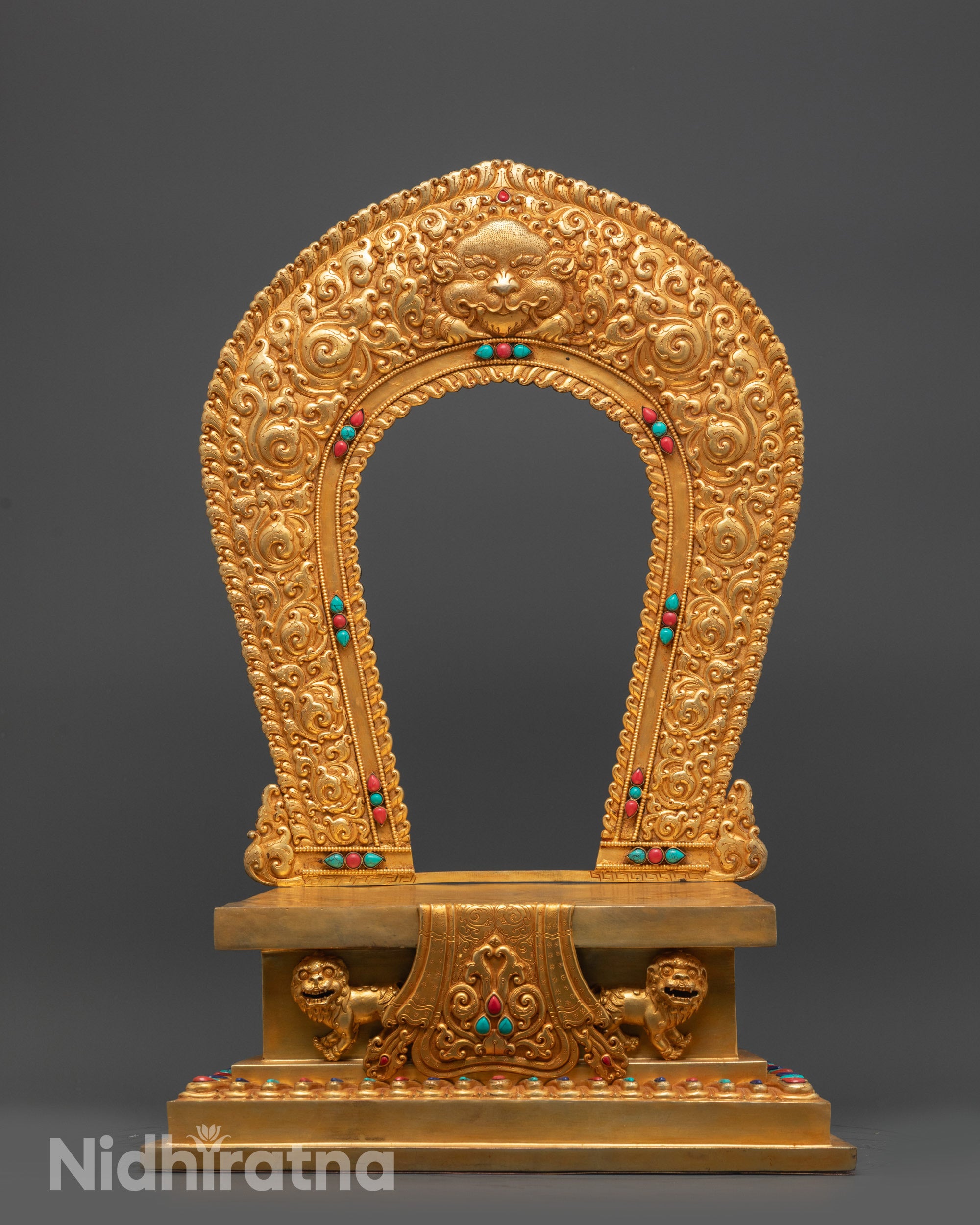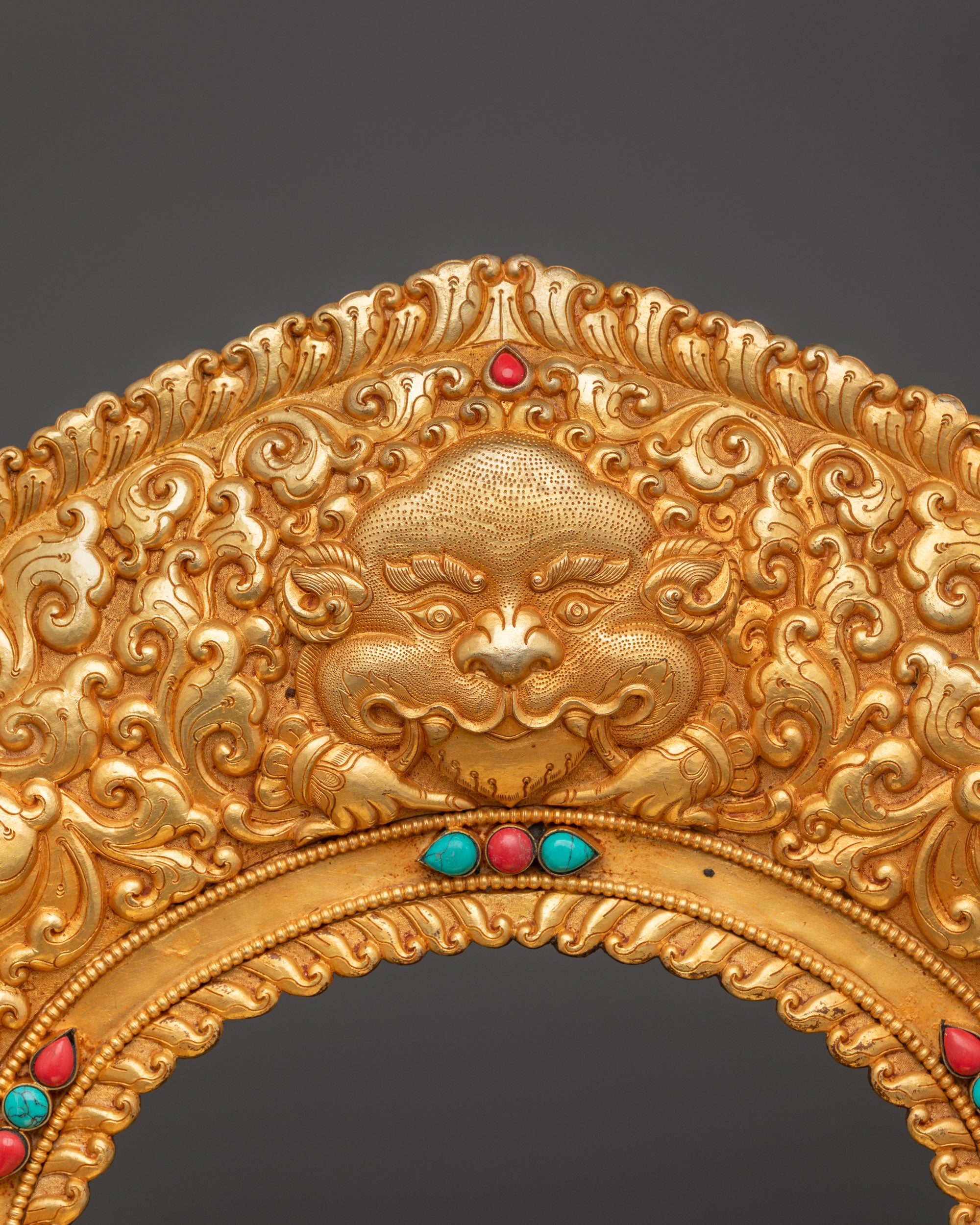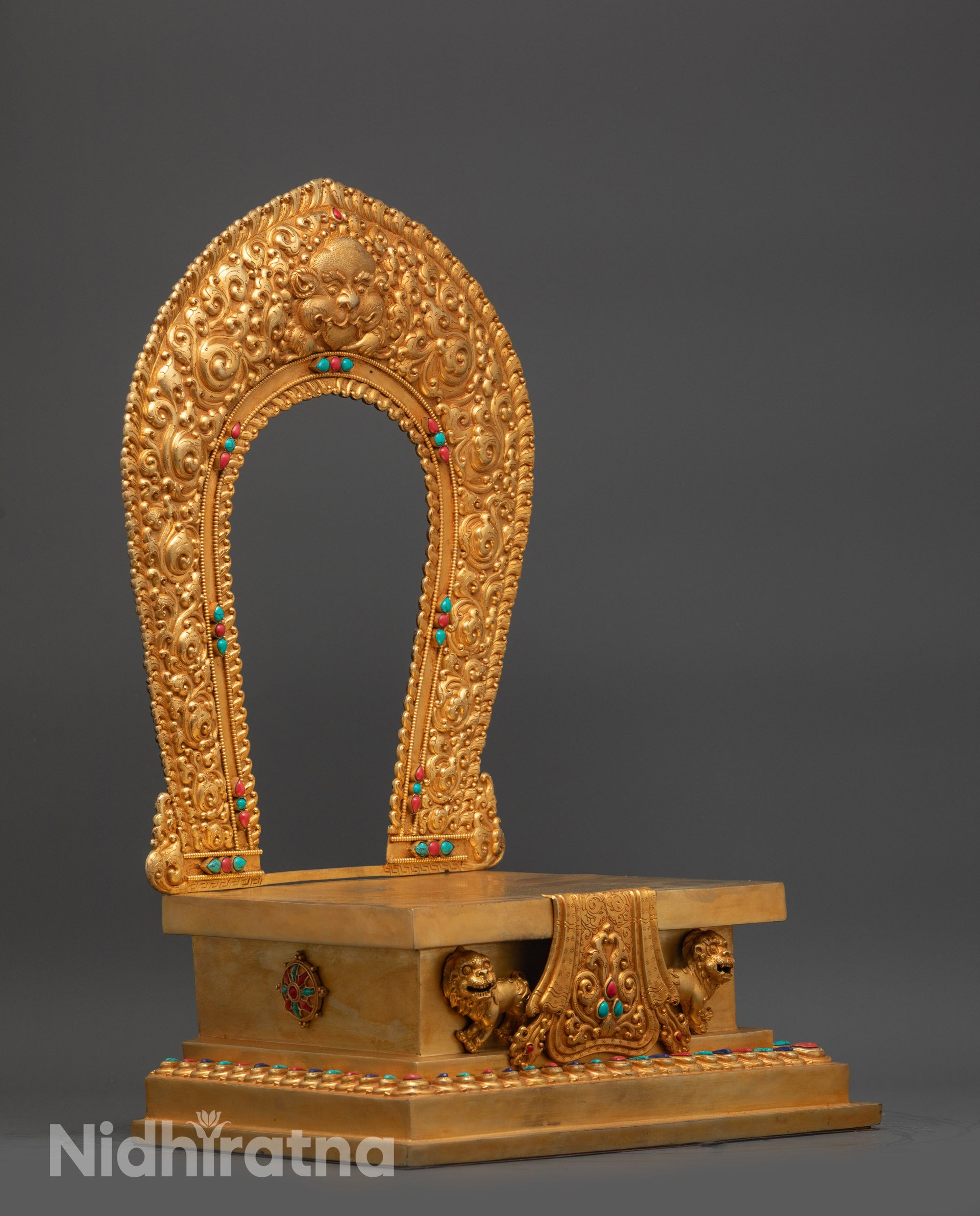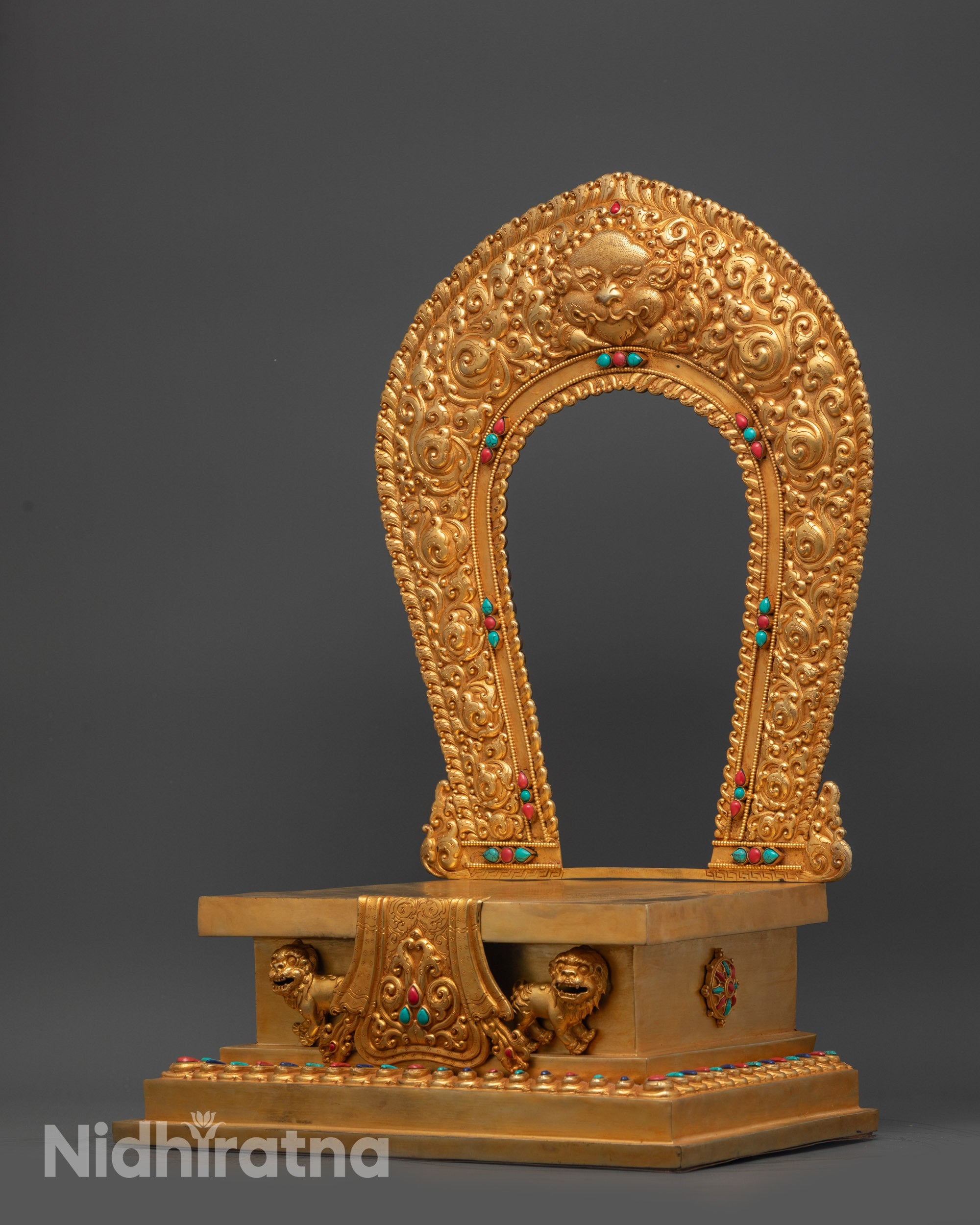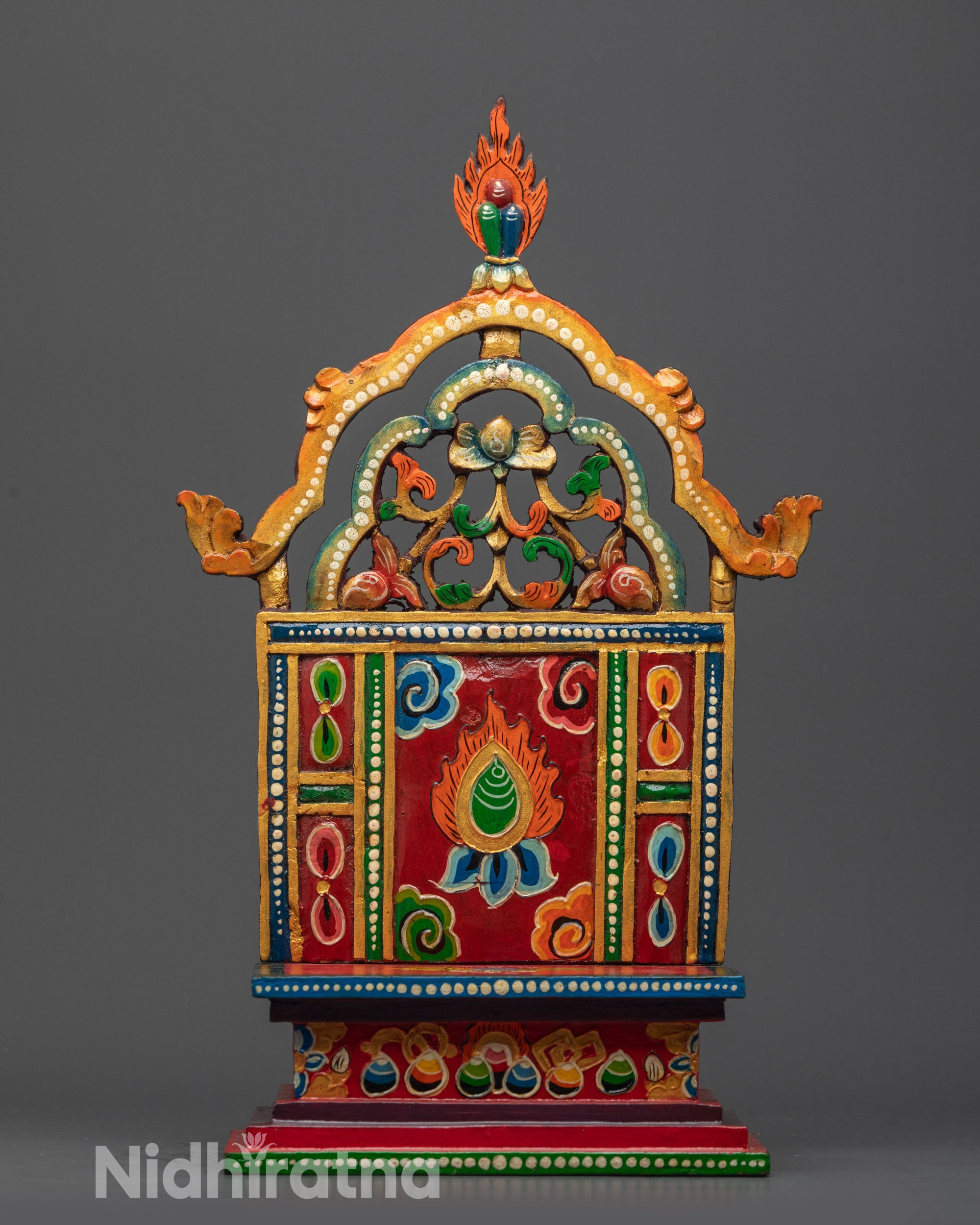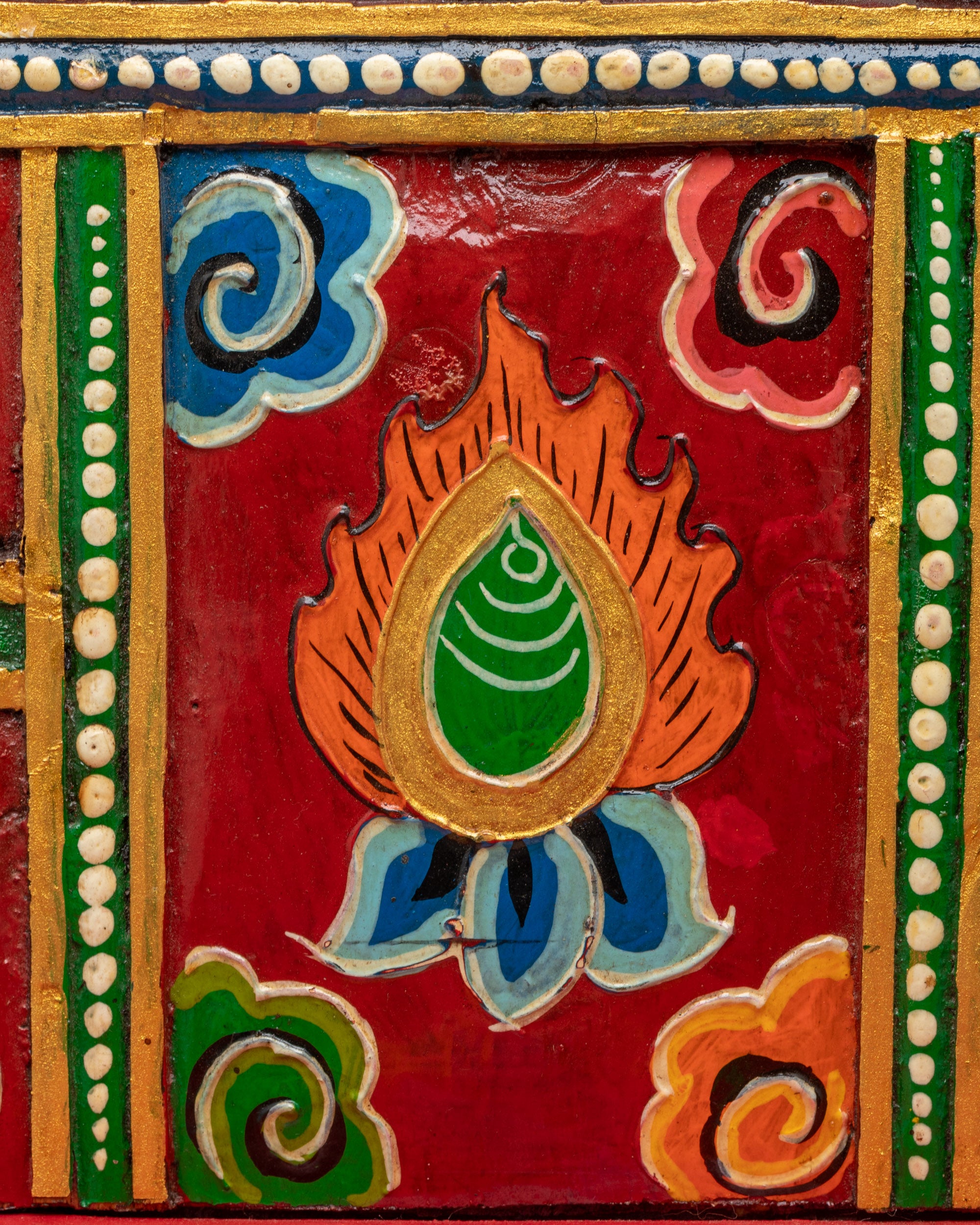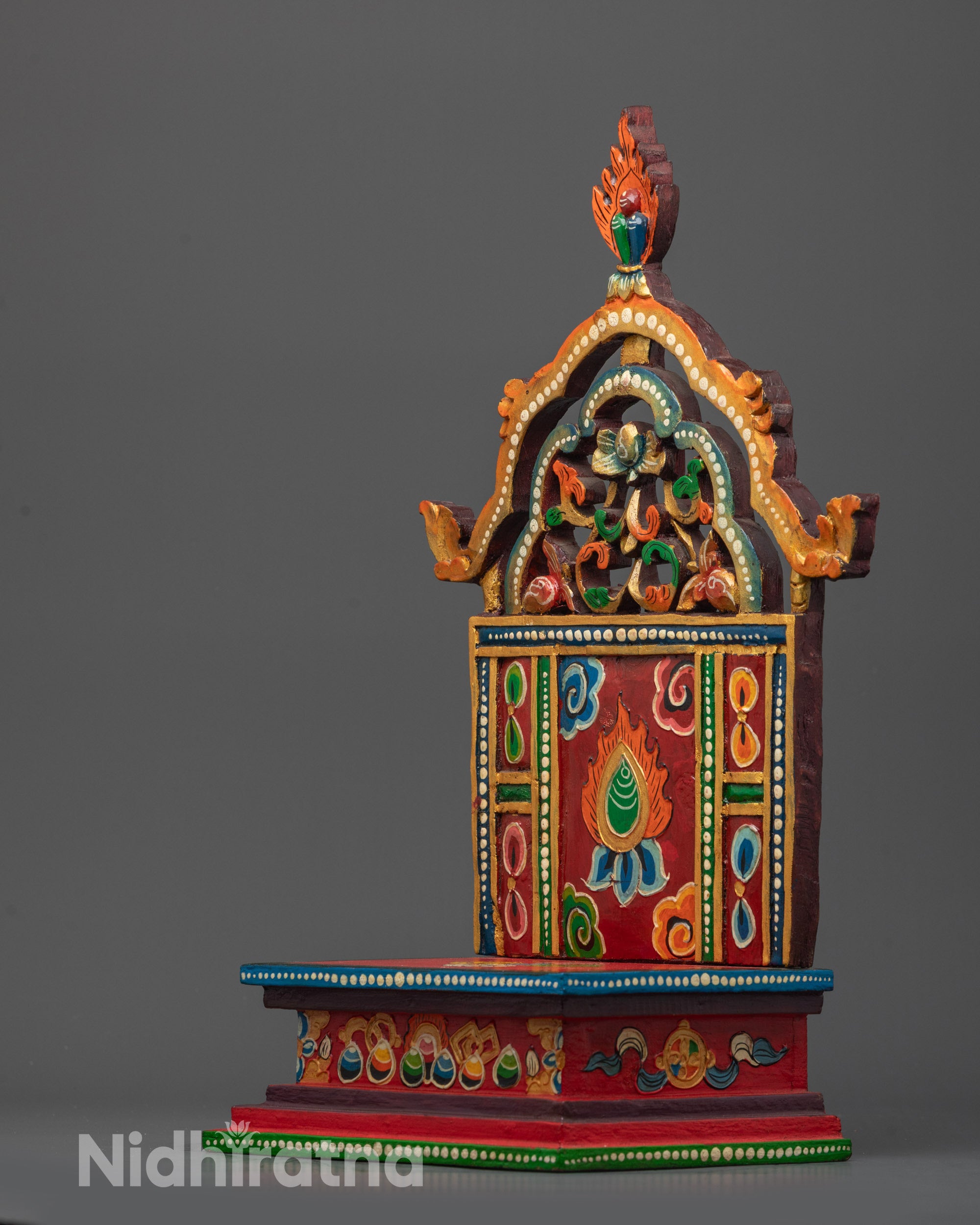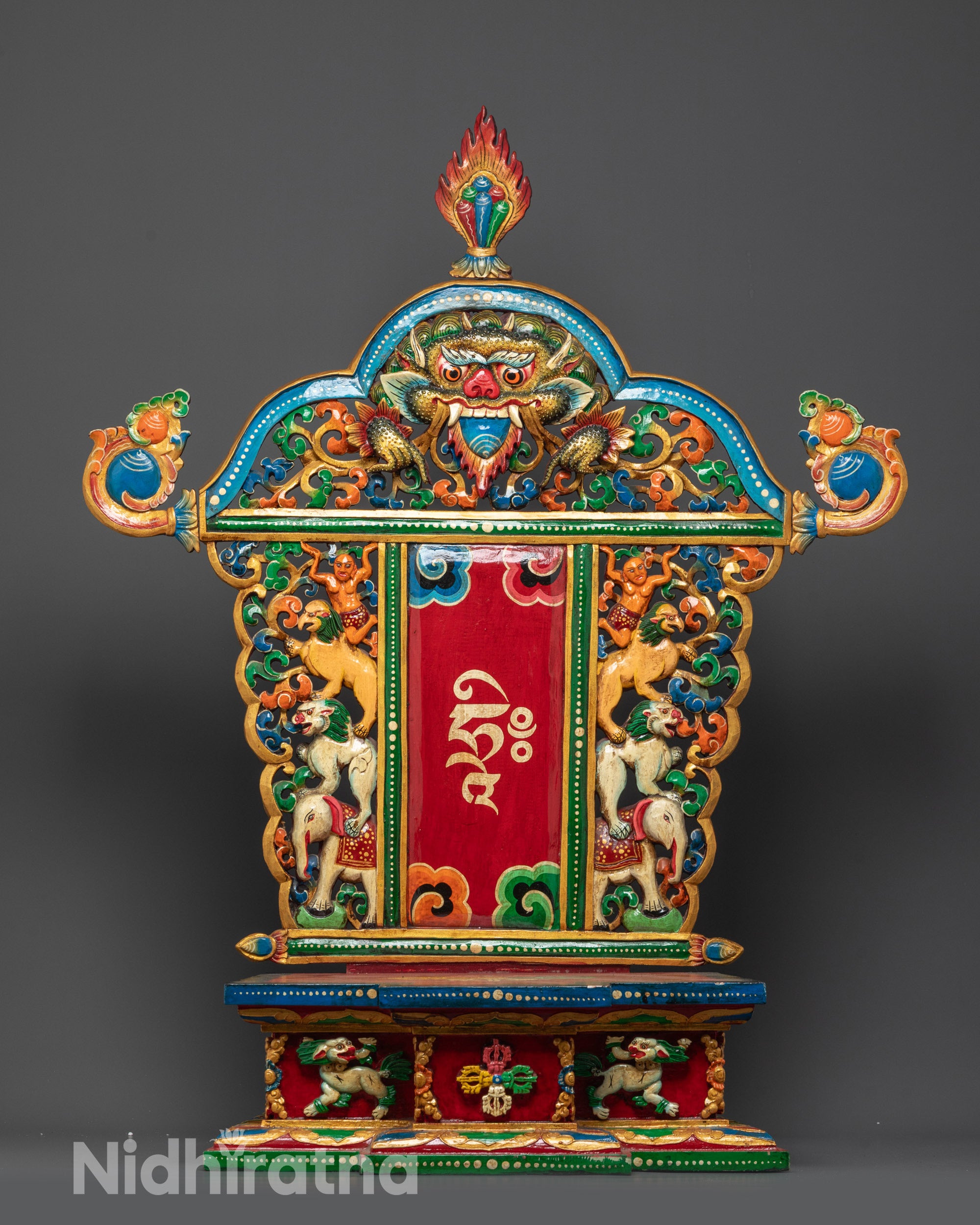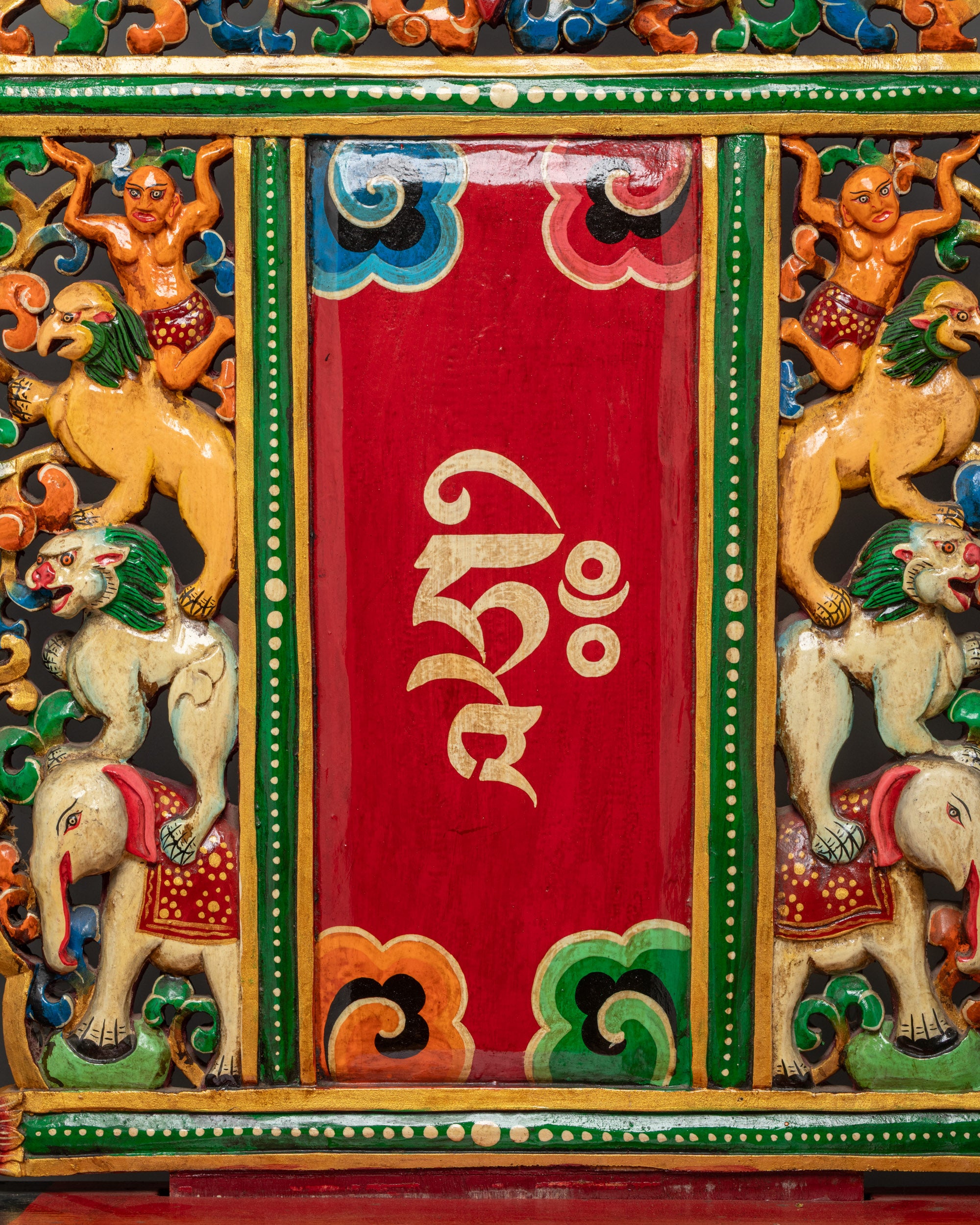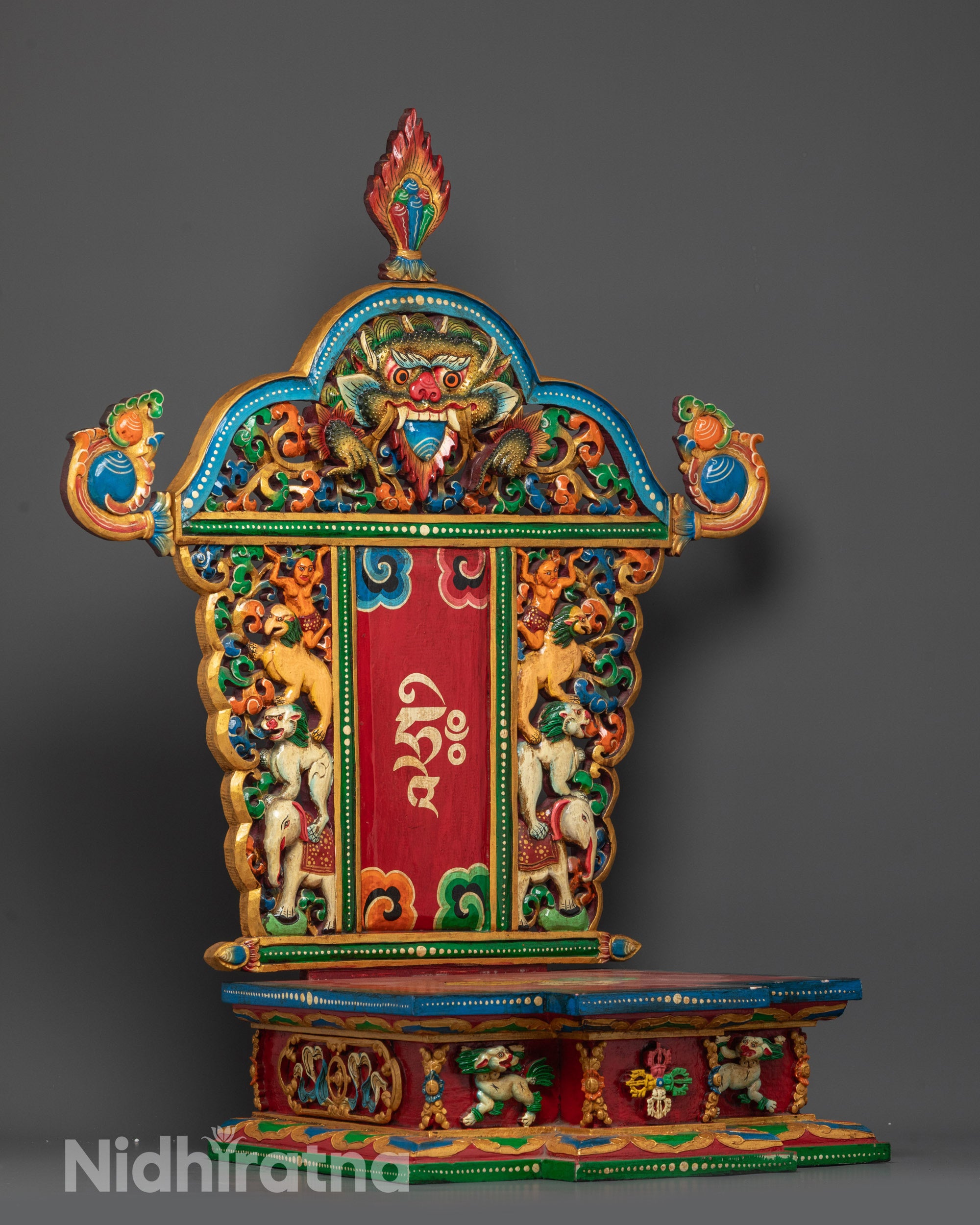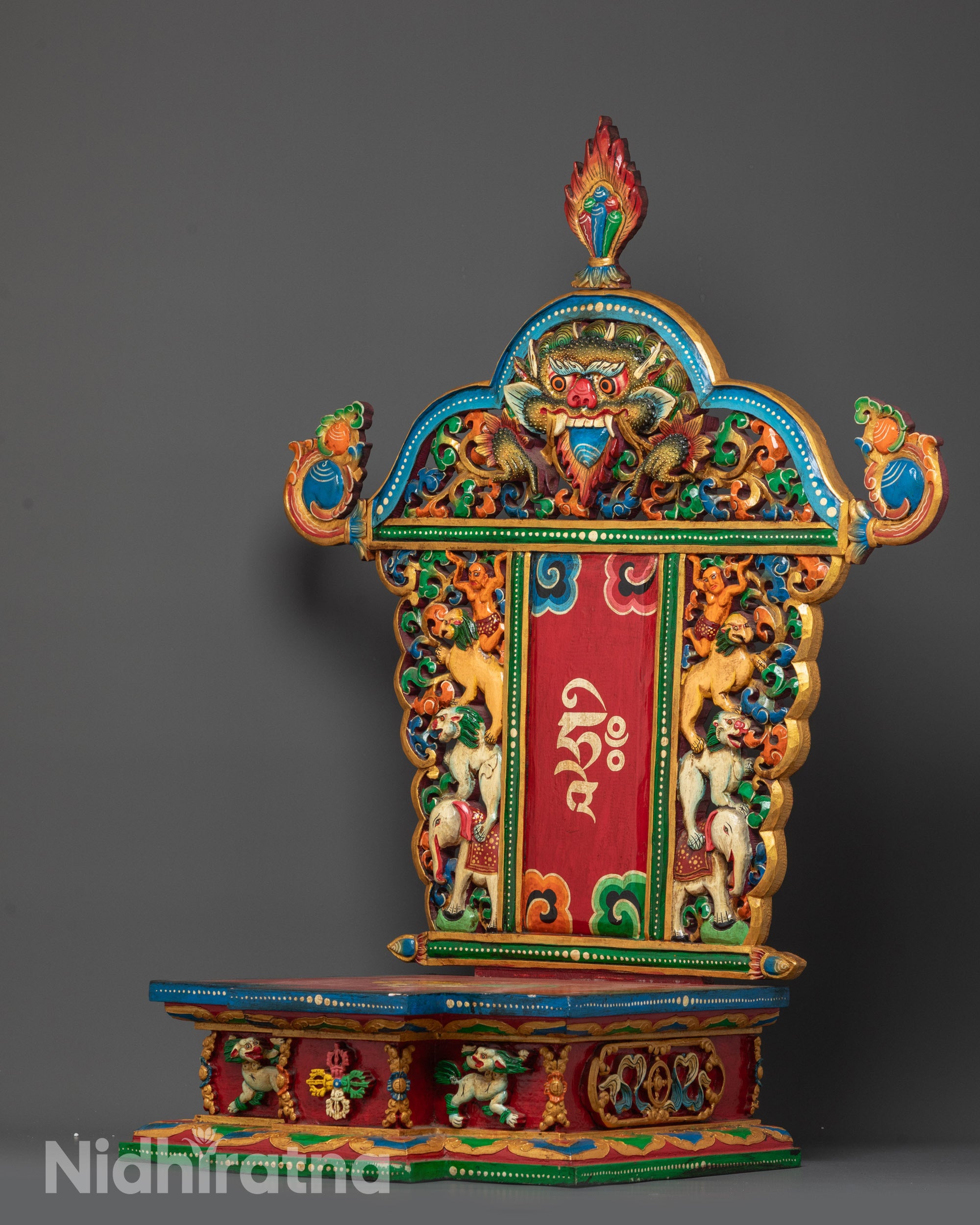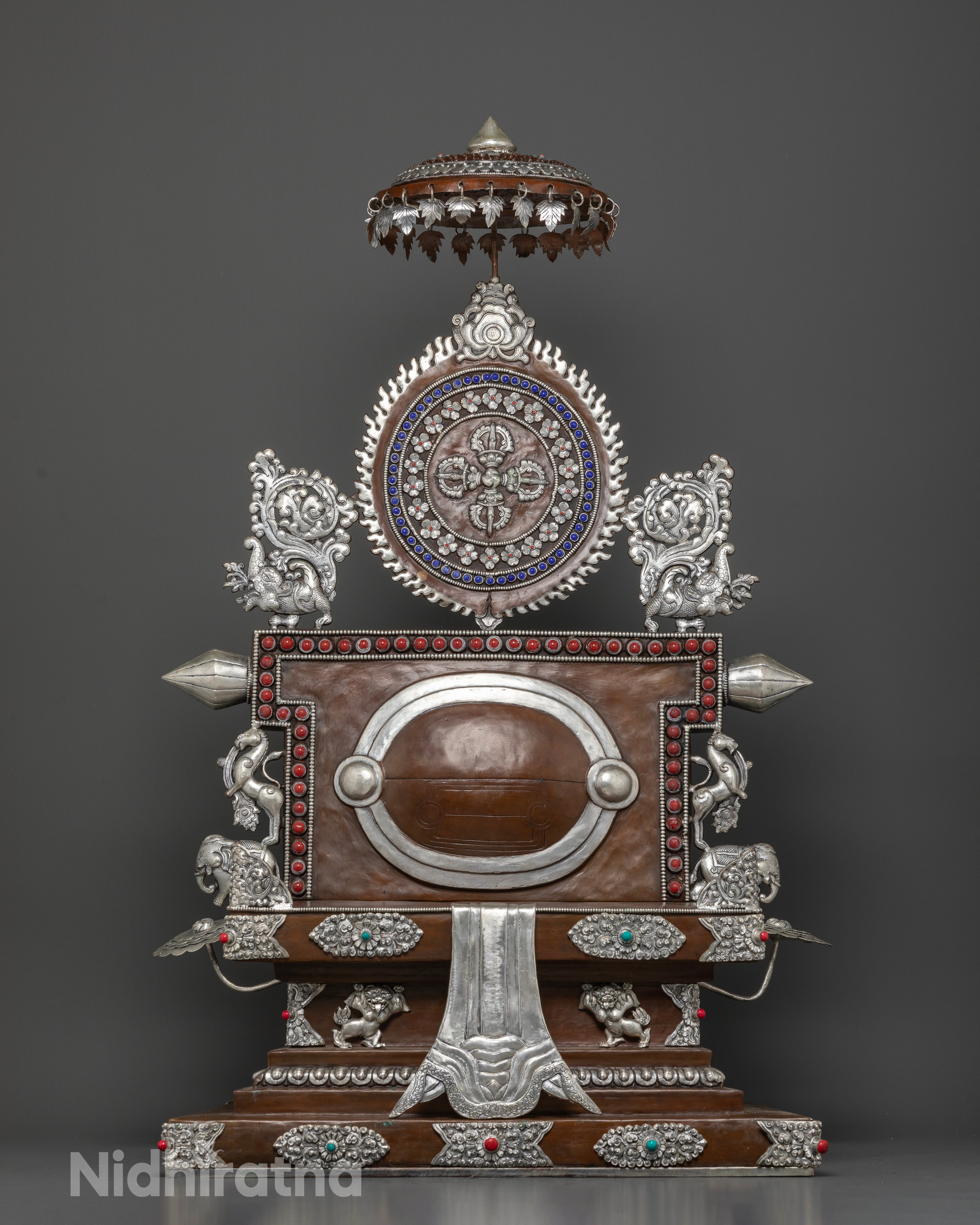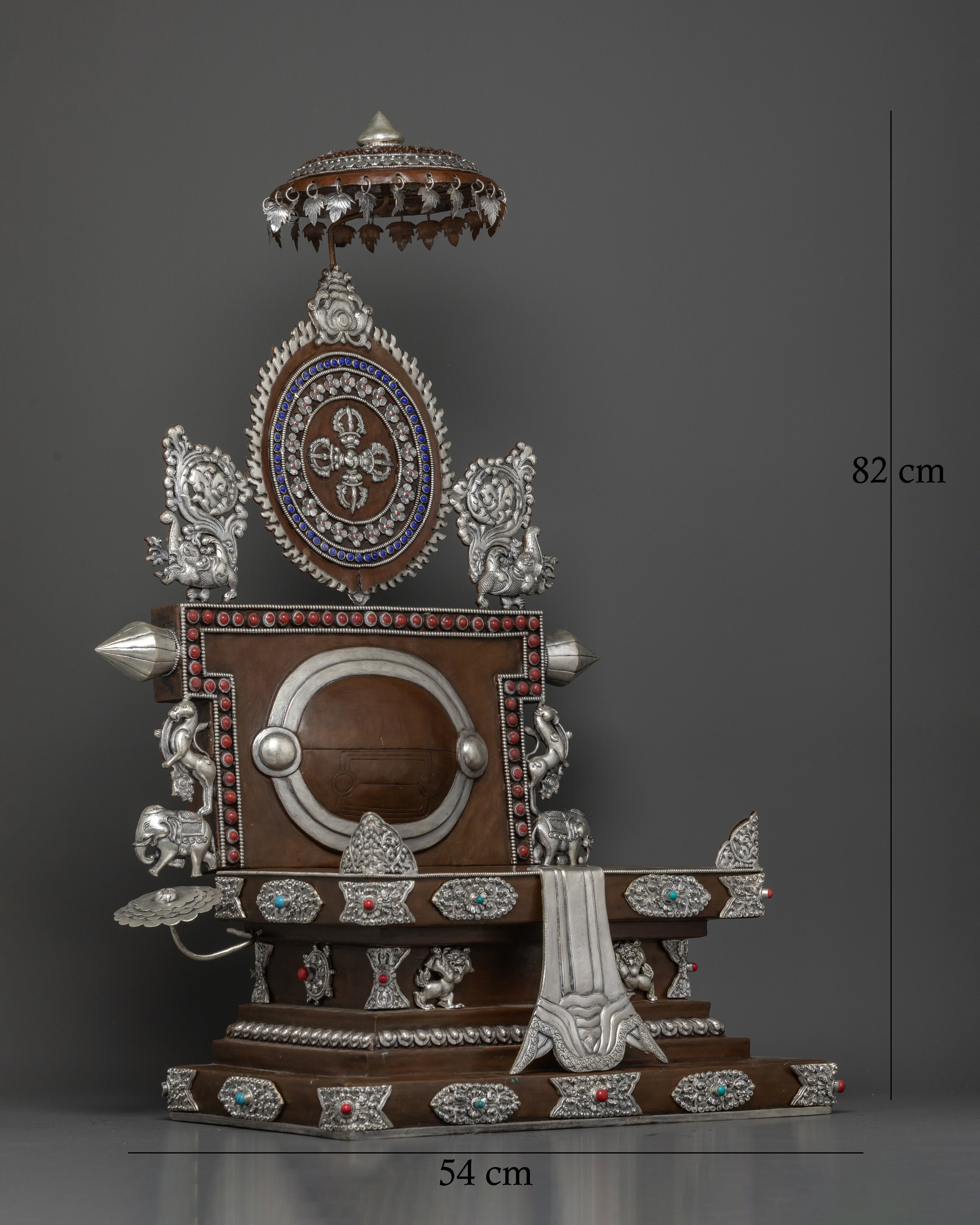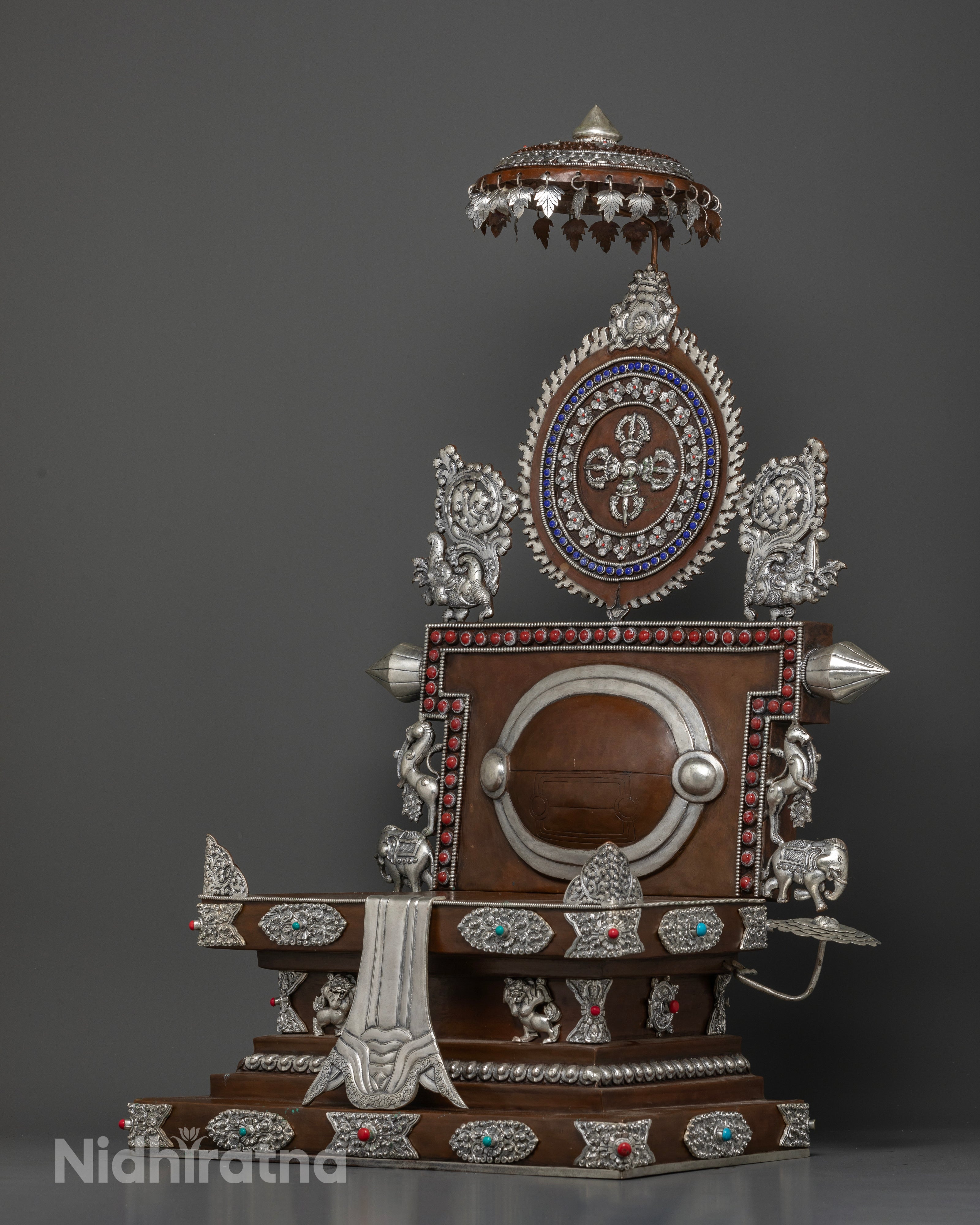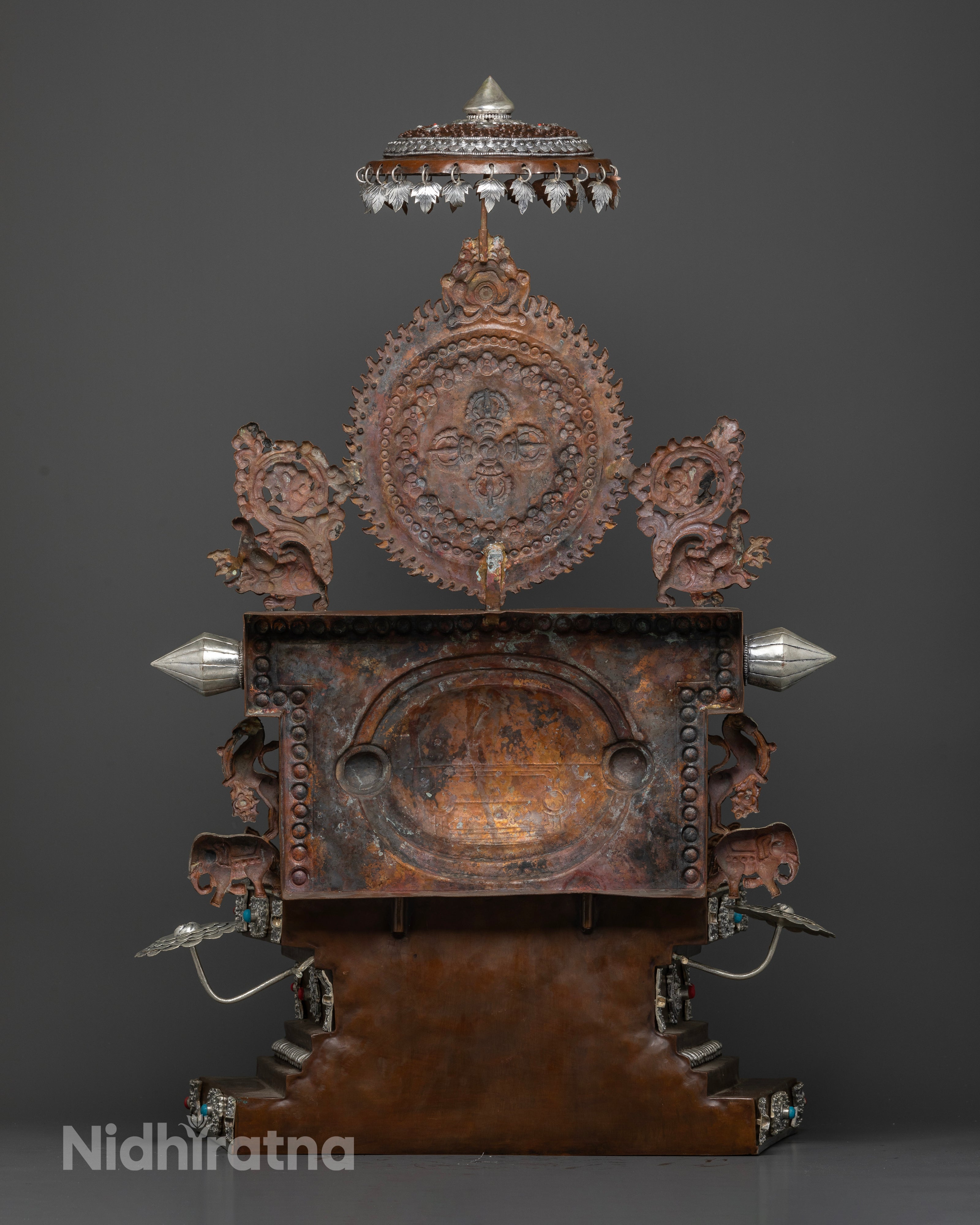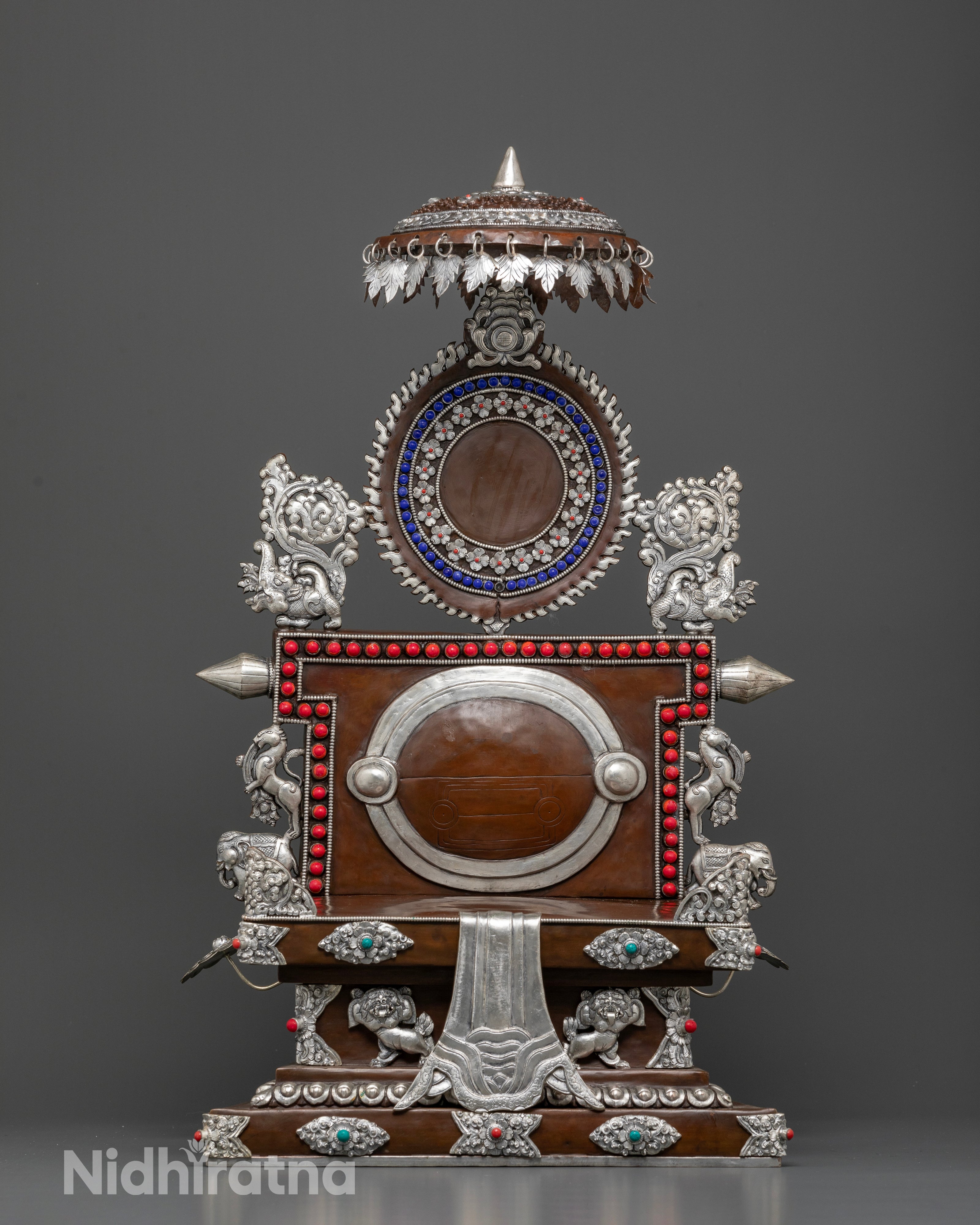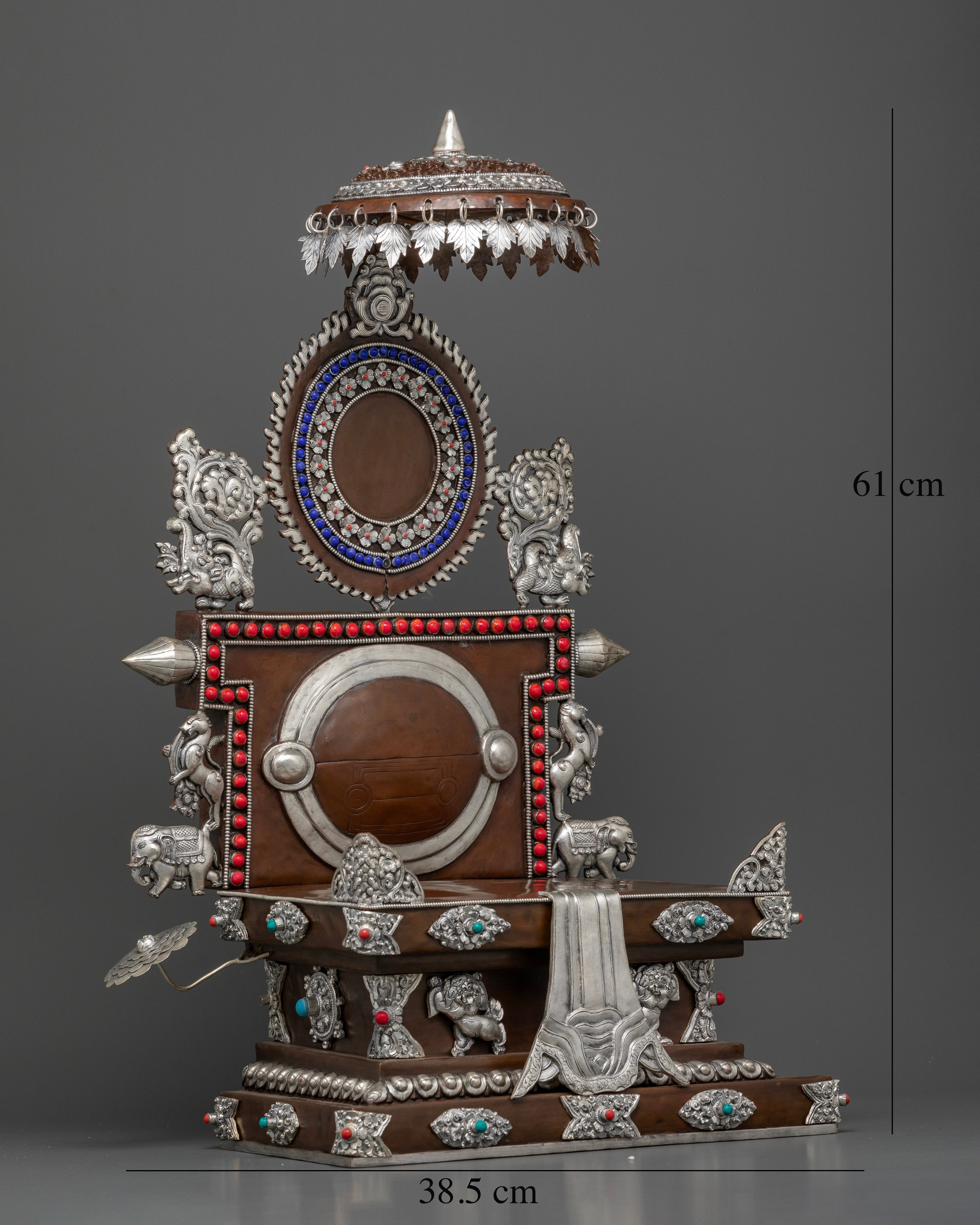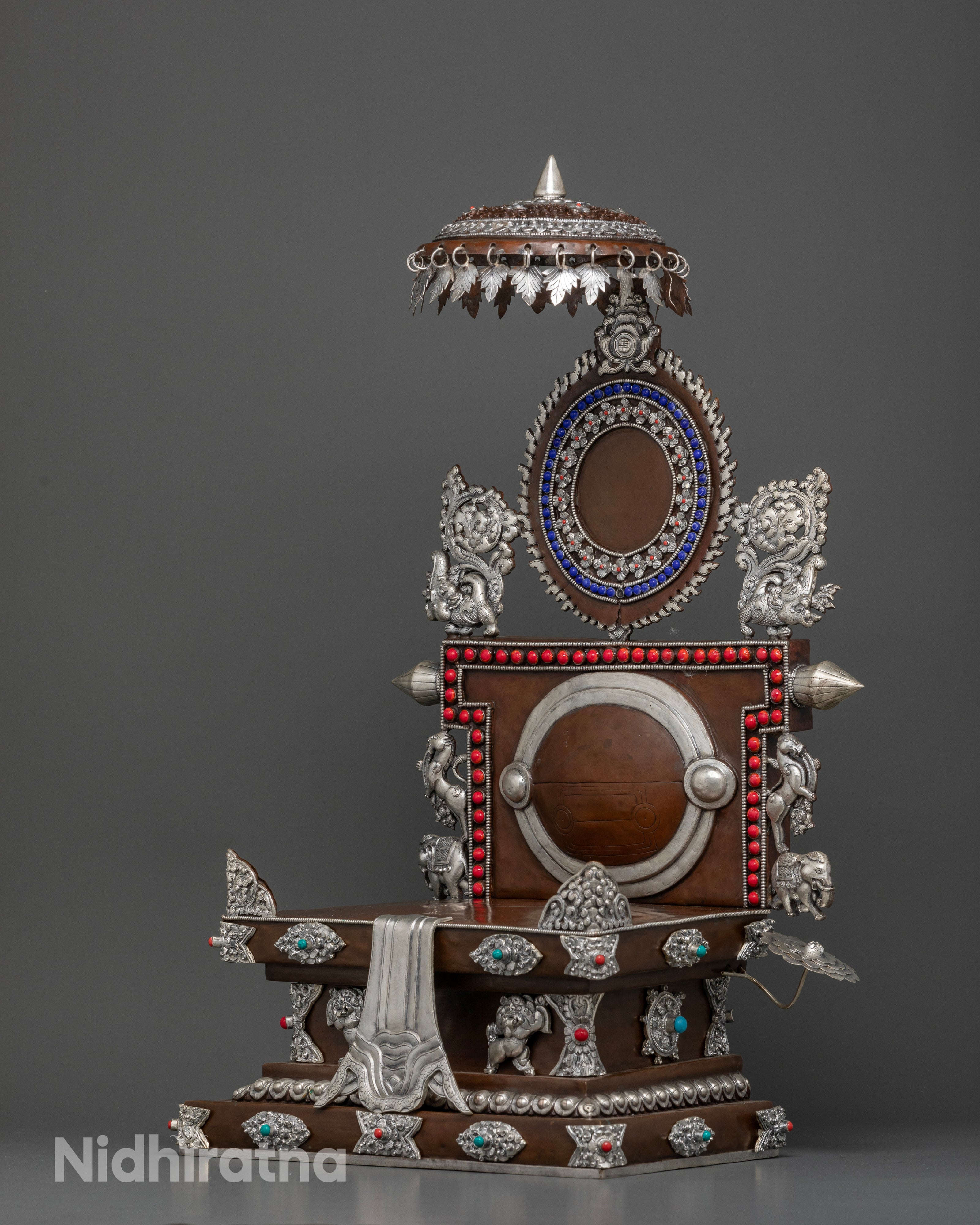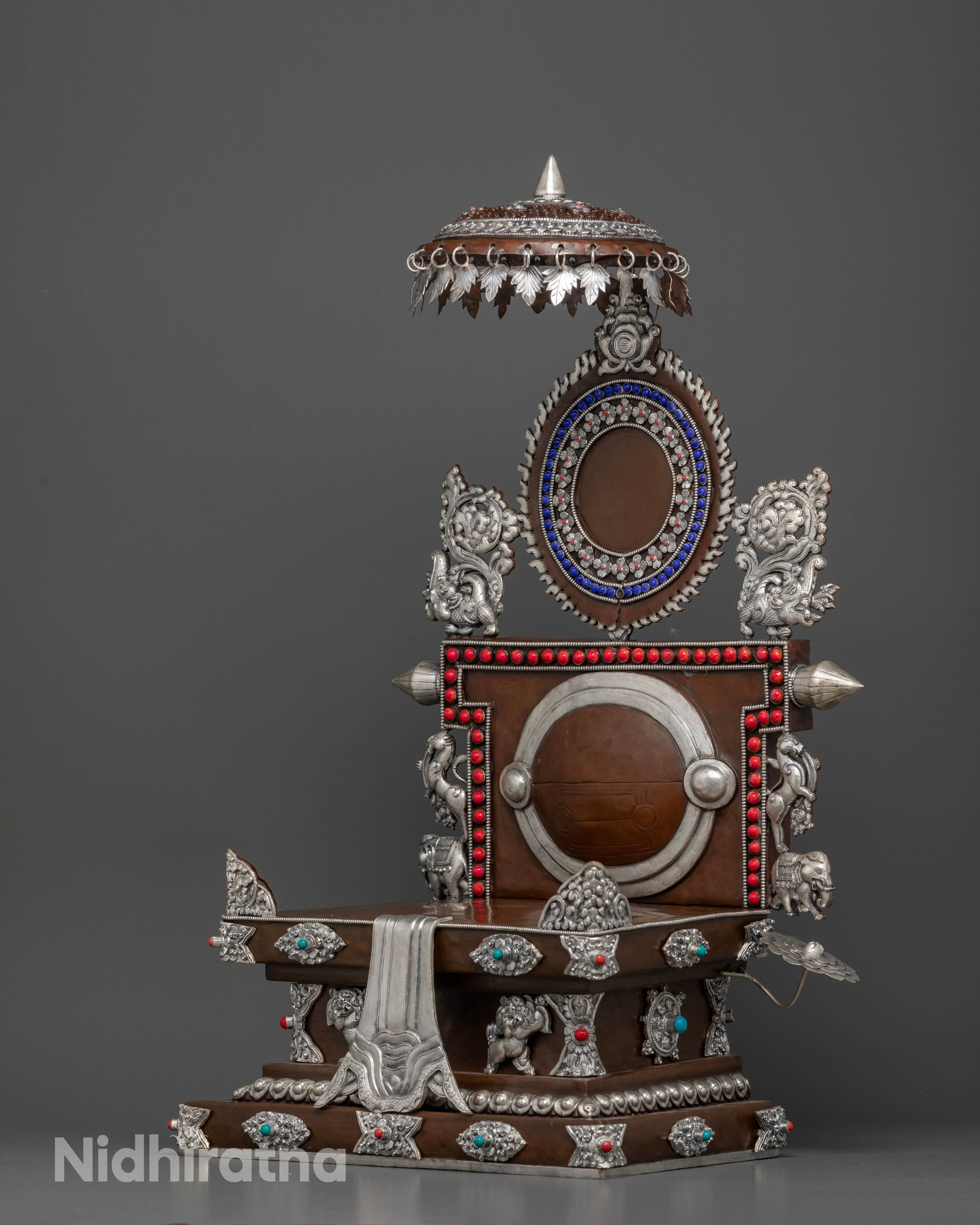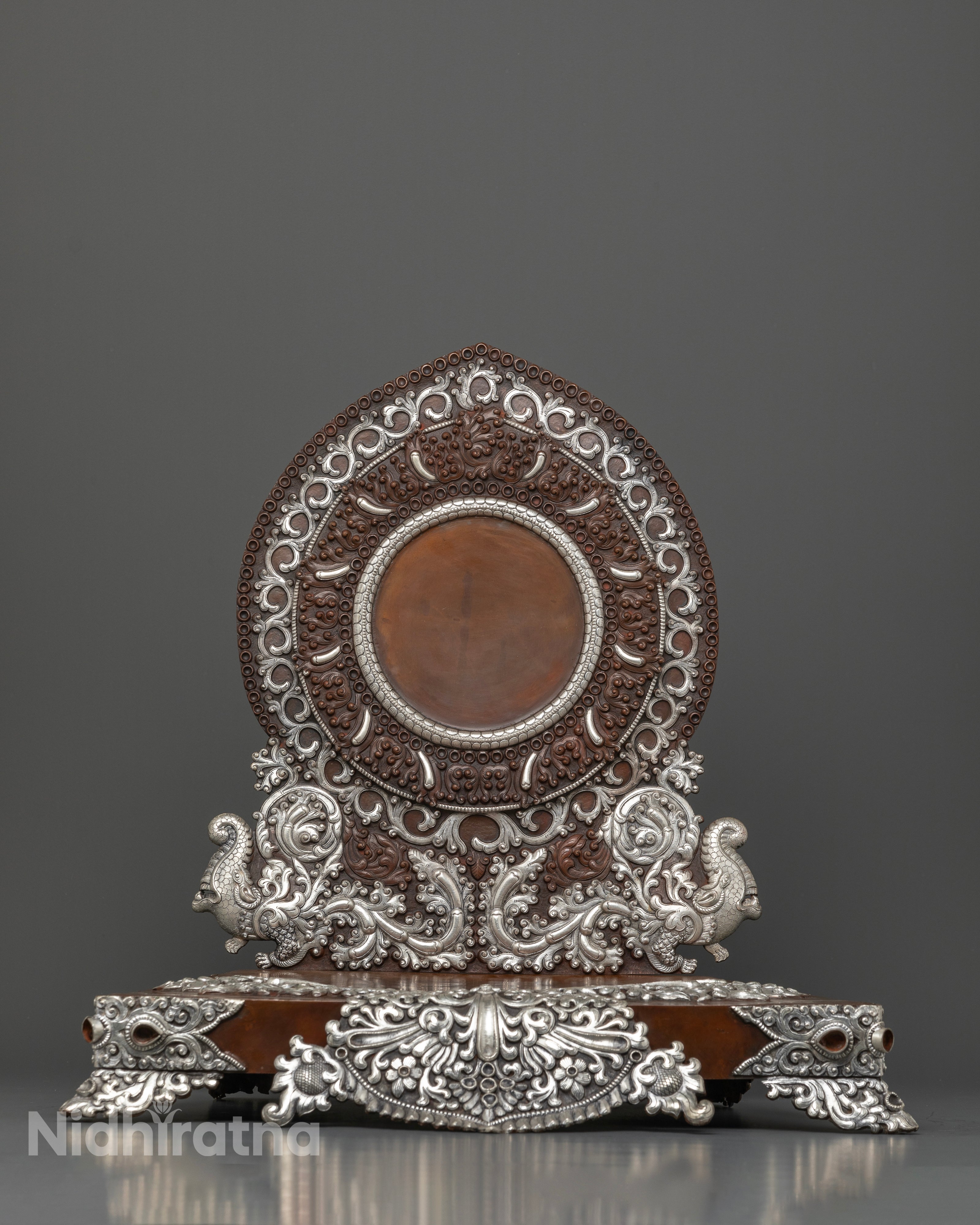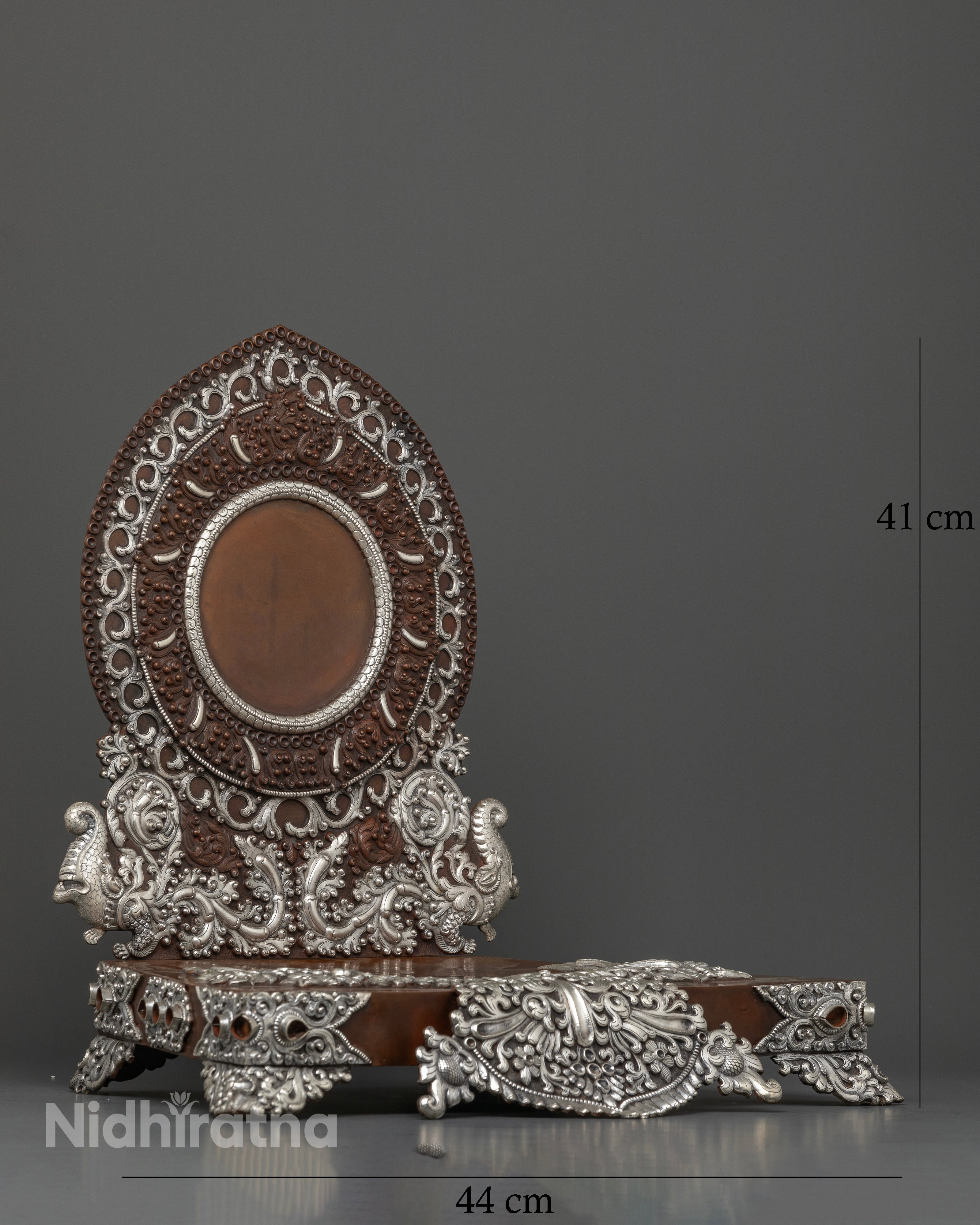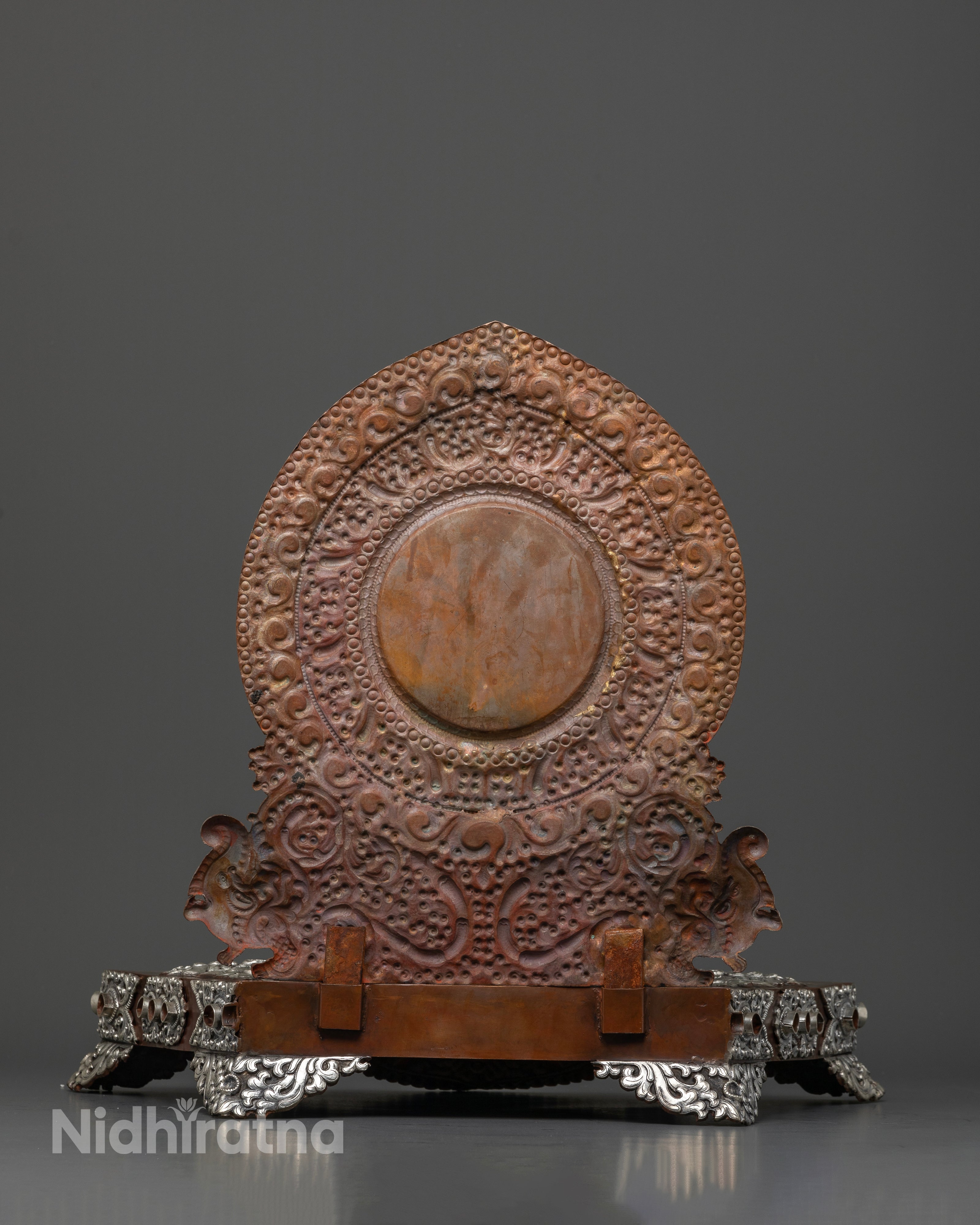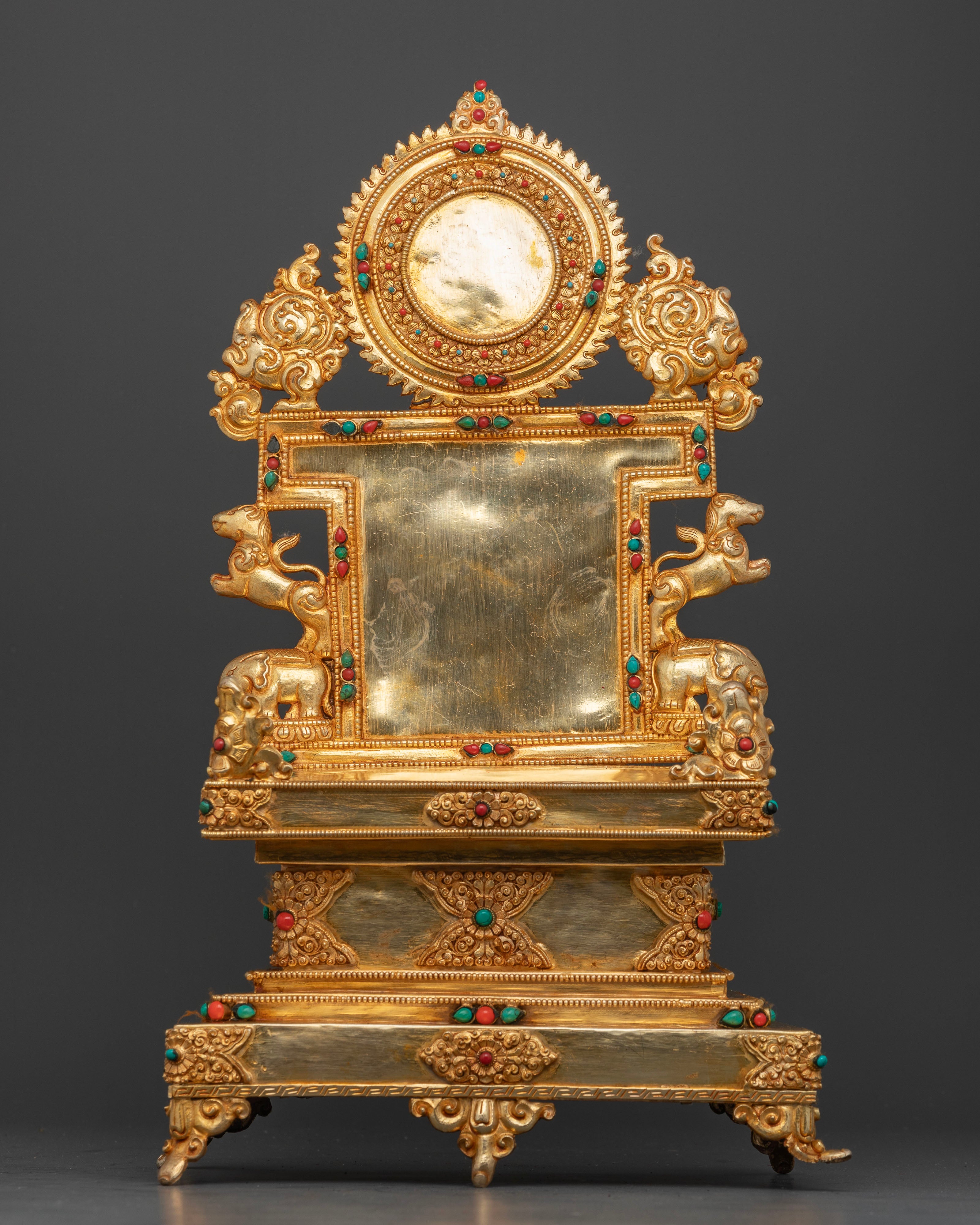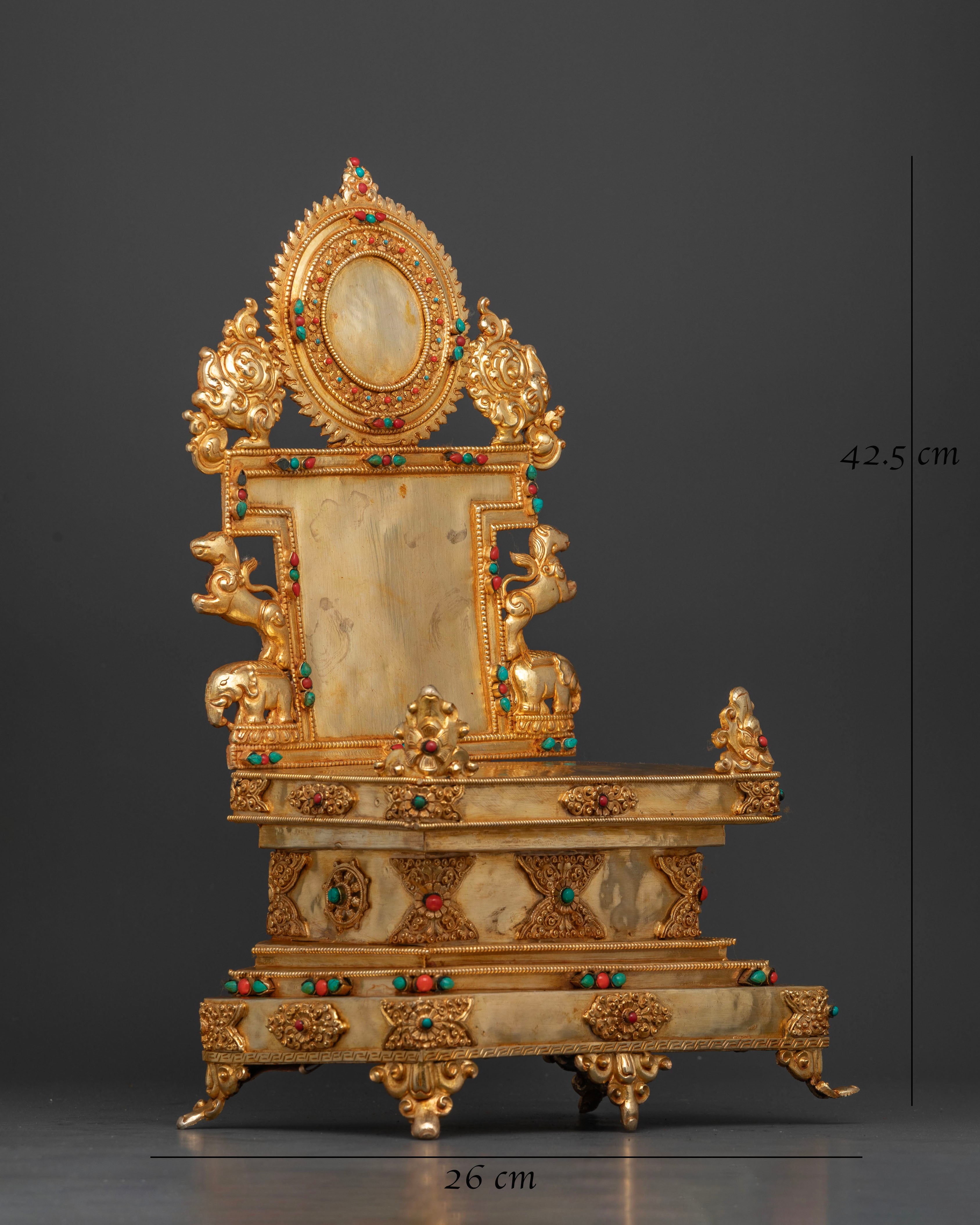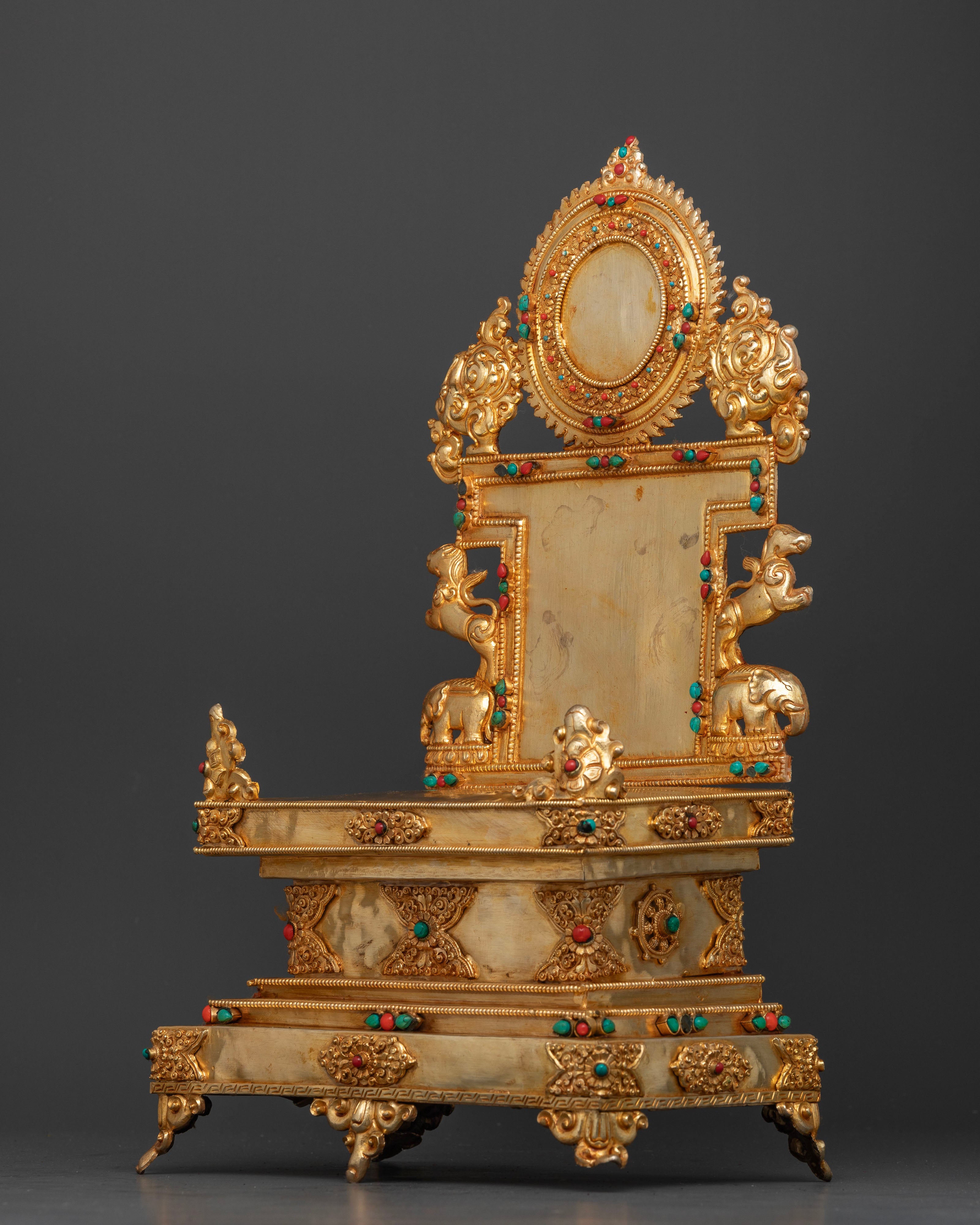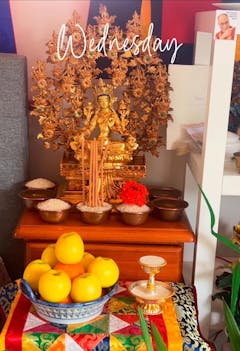Handcrafted Throne for Vajrayana Deity | 24K Fire Gold-Gilded Throne
Handcrafted Gold-Gilded Throne | Sacred Seat for Deity Statues
Traditional Buddhist Throne | Artisan Hand-Carved Woodwork
Handcrafted Buddhist Throne | Intricate Nepalese Statue Seat for Shrines
The Regal Oxidized Throne: A Symbol of Abundant Blessings
Majestic Throne: The Oxidized Seat of Prosperity
The Golden Throne: Symbol of Divine Sovereignty
Nidhiratna's Throne: A Seat of Divine Wisdom and Compassion
Nidhiratna’s Throne is a masterfully crafted piece of sacred furniture, designed to serve as a seat for deities and spiritual figures in Buddhist practice. Created with the same dedication to detail as our exquisite statues, the throne is a symbol of power, wisdom, and spiritual authority. This throne is not just an artistic object; it is a revered piece that embodies the presence and blessings of the deity it supports.
Handcrafted in Nepal, the throne features a copper base, beautifully gilded in gold, which adds a touch of radiance and sacredness to its design. The throne’s design incorporates intricate carvings and sacred symbols, showcasing the skilled craftsmanship passed down from generations of master artisans. Every curve, every pattern, and every ornament is carefully chosen to align with the spiritual and symbolic significance of the throne, making it a perfect resting place for sacred statues such as those of Buddha, Bodhisattvas, or deities.
Symbolism of the Throne
In Buddhist iconography, the throne holds great symbolic significance. It is a representation of the high and exalted nature of the deity or figure seated upon it, signifying their transcendence and enlightenment. The throne acts as a physical manifestation of the divine presence, offering a symbolic foundation of stability and wisdom for the figure it holds. In this way, the throne becomes not only a seat but a vessel for the blessings of the deity, radiating peace and compassion throughout its surroundings.
Typically, a throne in Buddhist iconography has a design that emphasizes stability, purity, and wisdom. Often adorned with motifs such as lotus petals, the throne symbolizes the purity of the Dharma and the Buddha’s teachings. The lotus, in particular, represents spiritual purity and the ability to rise above the murkiness of the world to attain enlightenment. The throne may also feature intricate designs, such as the eight auspicious symbols of Buddhism, which represent the key elements of Buddhist practice and teachings.
Design and Craftsmanship
The throne's design is meant to convey a sense of reverence and respect for the divine. Its regal and dignified appearance invites practitioners to reflect on the qualities of the deity seated upon it, inspiring awe and devotion. The craftsmanship is of the highest quality, with each detail meticulously executed by skilled artisans, reflecting their dedication to preserving the traditional methods of sacred art.
The throne itself is often placed in a meditation space or temple, providing a designated space for the deity to be honored. Its sturdy and stable form reflects the support the deity offers to all sentient beings, guiding them toward enlightenment with wisdom, compassion, and skillful means.
Use and Purpose of the Throne
The throne serves as a focal point in Buddhist practices, whether for meditation, prayer, or ritual. It offers a designated space for the deity’s presence to be felt, creating a space where practitioners can connect with the divine. The throne also encourages practitioners to embody the qualities of the deity seated upon it. For instance, a Buddha seated on the throne inspires practitioners to follow the path of enlightenment, while a Bodhisattva’s presence may encourage one to cultivate compassion for all beings.
In many temples and altars, the throne holds a sacred statue of the Buddha or a revered deity, elevating their physical and symbolic presence. As a result, the throne serves as a spiritual reminder that wisdom and compassion are not merely abstract concepts, but tangible qualities that can transform one’s life.
A Spiritual Gateway
This throne is more than just a physical object. It is a gateway to the divine, inviting both practitioners and visitors to reflect on the power of spiritual practice. The throne’s presence elevates the space, creating an atmosphere of reverence and devotion, where the divine wisdom of the Buddha and other enlightened beings can inspire and guide all who enter. Whether in a temple, a home shrine, or a meditation space, the throne becomes a seat of both physical and spiritual significance, making it a central point for the practice of compassion, wisdom, and peace.
Nidhiratna’s Throne is a sublime piece of sacred furniture, designed to elevate the spiritual practice of those who encounter it. Through its elegant craftsmanship, sacred symbolism, and spiritual significance, the throne serves as a reminder of the divine wisdom and compassion that pervades the teachings of Buddhism. It is not only a seat for a deity but a sacred space that encourages reflection, devotion, and connection with the path of enlightenment. The throne stands as an offering to the divine, a testament to the power of sacred art and its role in inspiring spiritual awakening.

